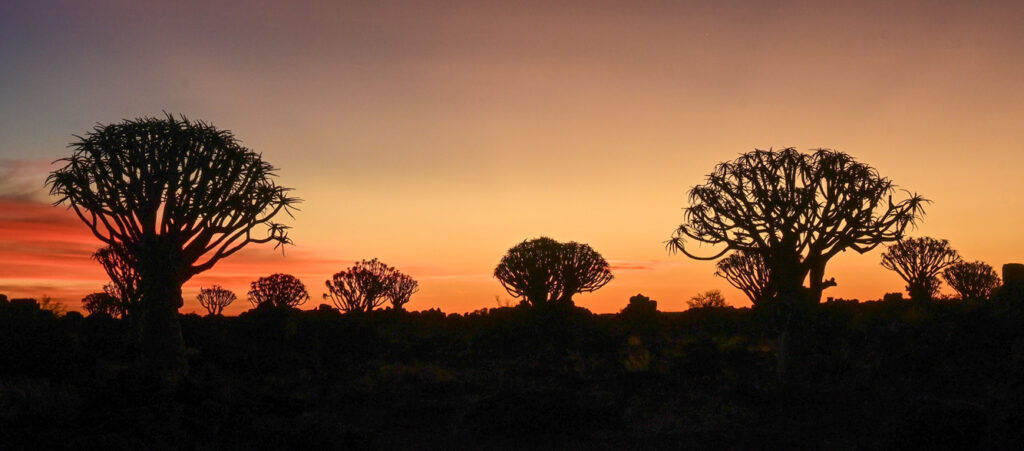
From Maun, Botswana, we had two reasonably big drives to get to the eastern entrance of Kgalagadi Transfrontier Park (KTP). This ‘Peace Park’ was created in 2000 as Africa’s first national park that straddles two countries (Botswana and South Africa), and borders a third (Namibia), with an aim of creating an enormous conservation area (over 3.6 million hectares) that links ecosystems across international borders. Although the drives were long, they passed quickly as they were filled with some neat stops at villages along the way and new landscapes as we headed back towards a desert environment.
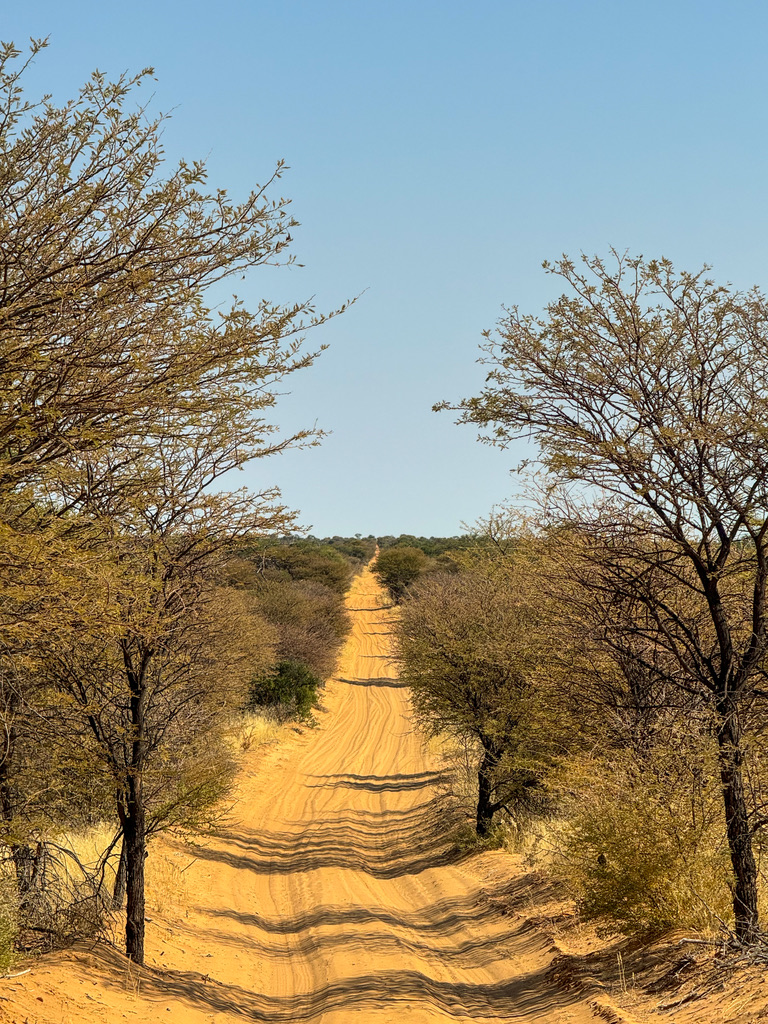
We started to see these fruits that looked like watermelons so we stopped to cut one open – it smelled like watermelon but was either very unripe or not for eating as it was very green and hard inside.
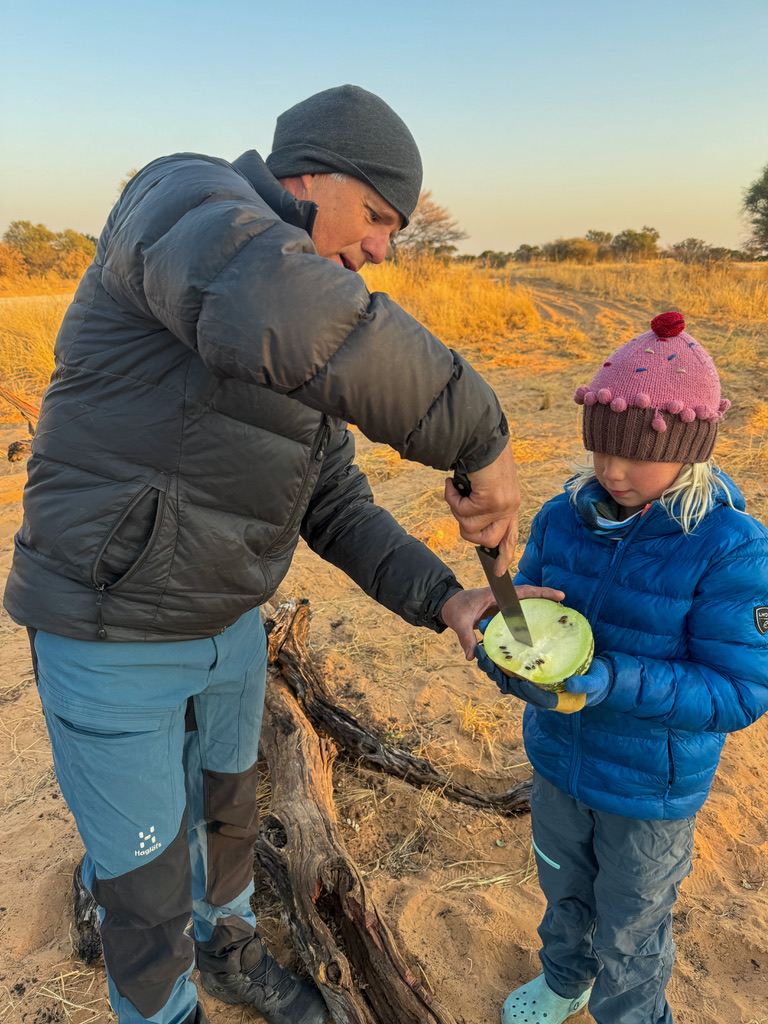

The Botswana section of KTP is very remote with very few campsites, which are often many kilometres apart and provide little more than a sun shelter (in the form of an A frame or a tree) and a long drop toilet. There are no fences so we had heard stories of lions sharing the shade of an A frame and leopards seeking water at a campsite tap so we were excited about what we might see. Unfortunately, due to it being a very dry year, we had neither running water in the taps or any cat sightings. We saw lots of footprints in the sand, just not the feet they belonged to! Regardless, it was beautiful and we thoroughly enjoyed the absolute quiet. We also enjoyed chatting to the few like minded wilderness-lovers that we met on this side of the park.
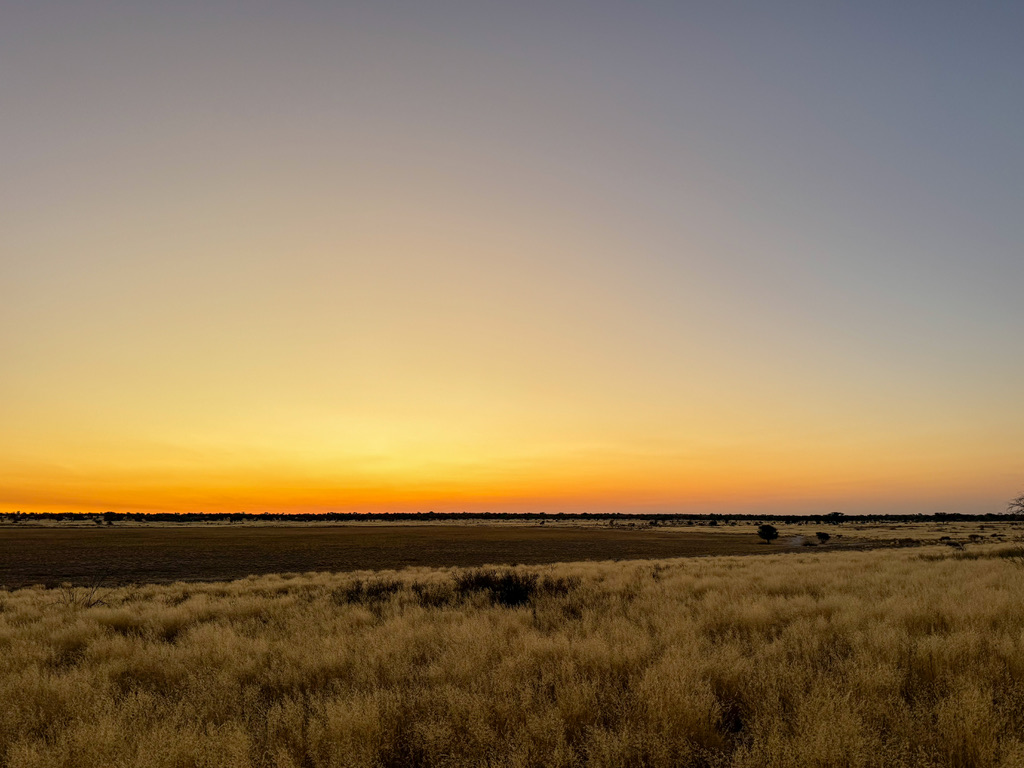
The kids spent an entire afternoon creating race tracks in the sand (to be driven by Pinky, the car they found at the beach in Norway). They took great delight when a flock of guinea fowl flew in en masse, from seemingly nowhere, early the next morning to do some trial-runs of their tracks!
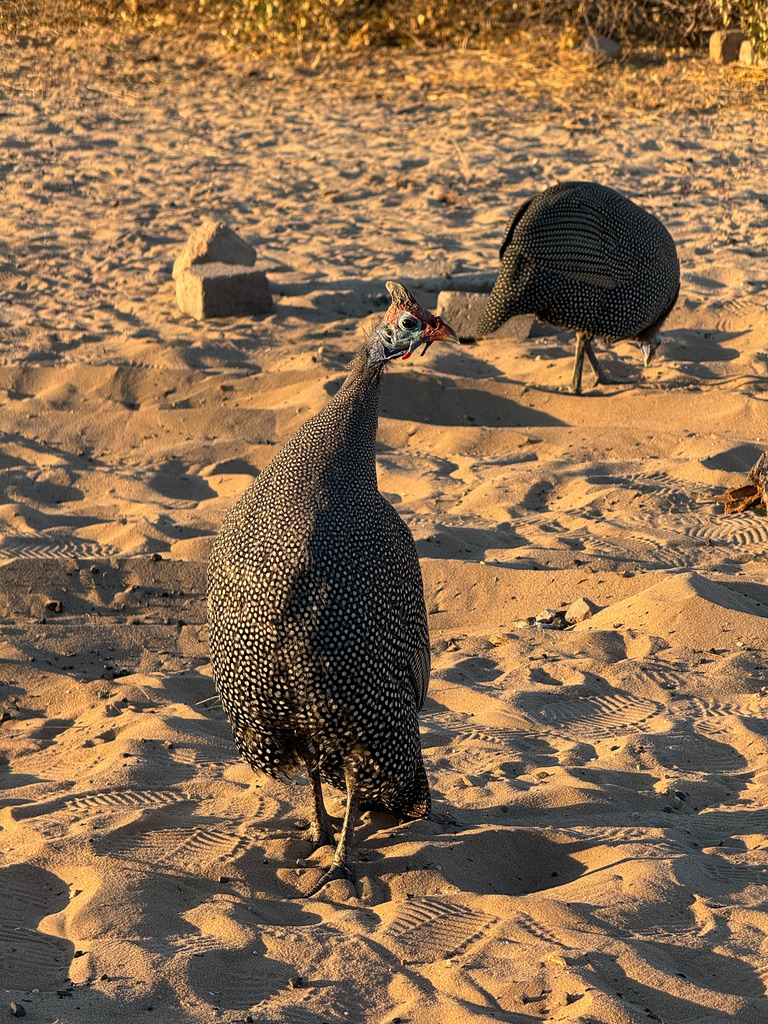

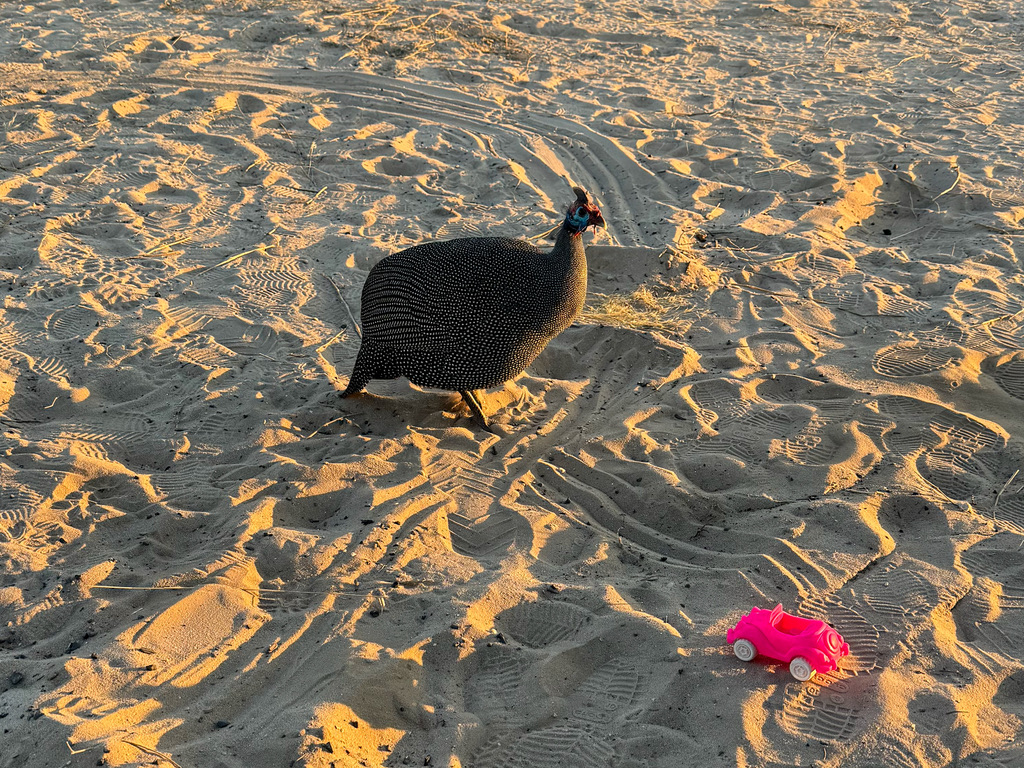
Lucas also spent time making this awesome fireplace with a stunning view over the Lesholoago Pan.

Logan has become quite the pro at cooking our meals over a campfire, often with Zara as his very willing and able sous chef. This night was butter chicken/tofu…served up with another stunning sunset and moonrise!

By now, we were up to our fourth night without running water. We work hard to keep bugs at bay but it’s fair to say we were pretty filthy by this point!
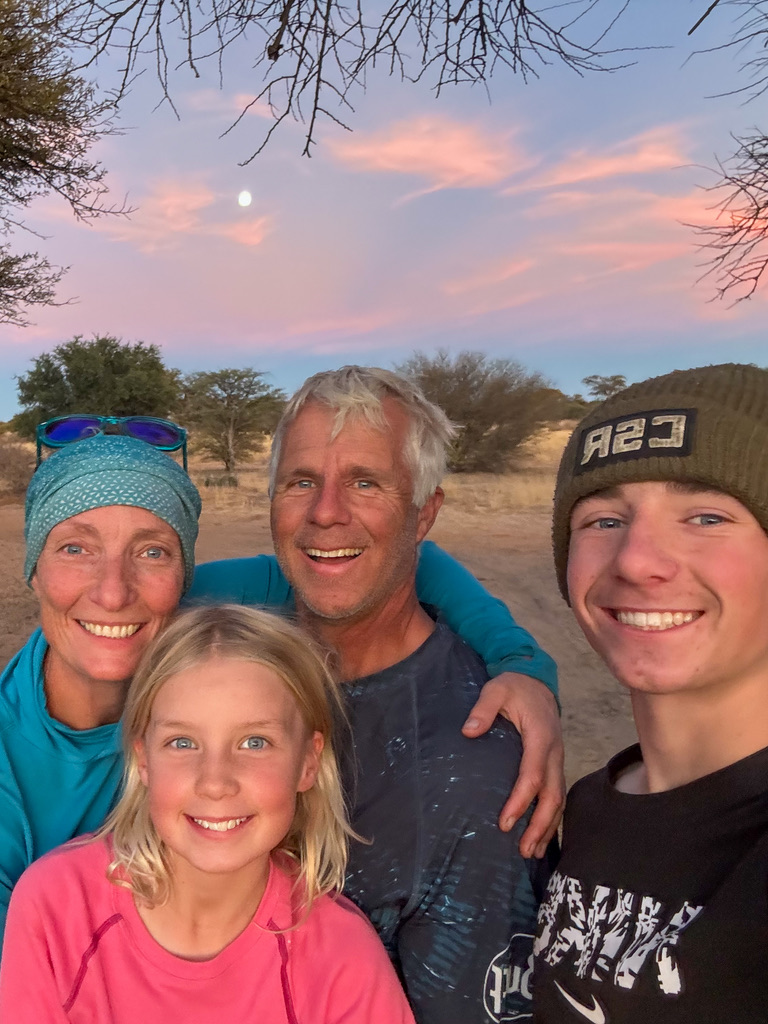
From there we drove west through the KTP to the South African side of the park. This side of the park has well-developed camps, which are fenced to keep the animals out and are busy with campers and tourists.
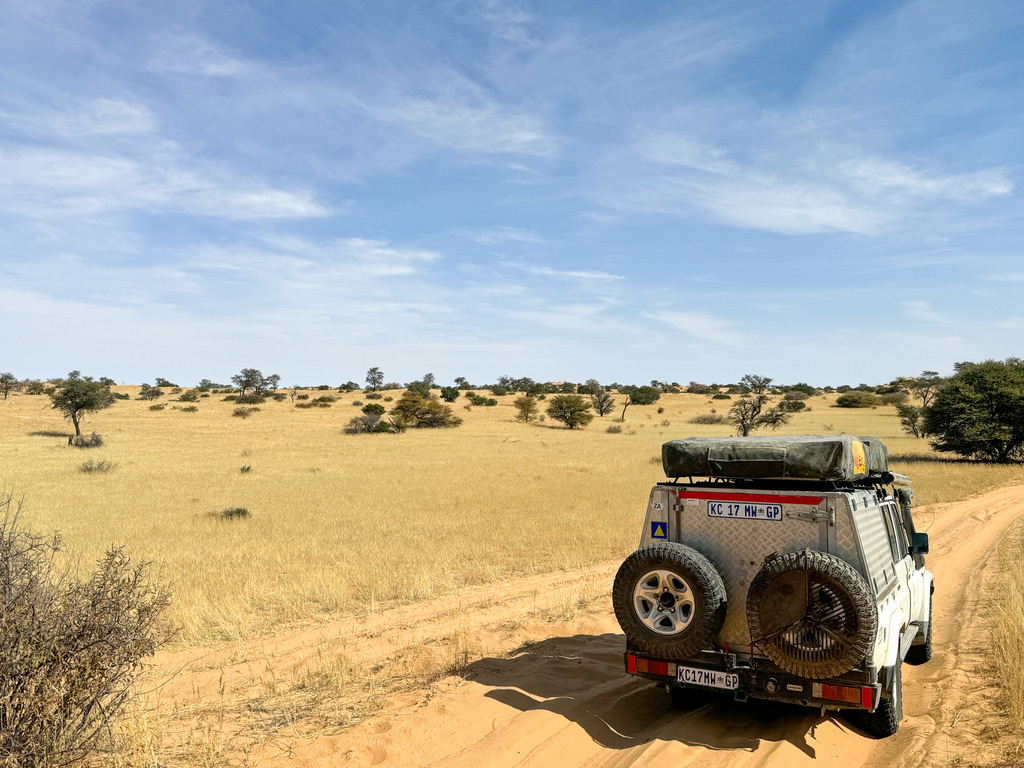
We followed these markers all the way down the dry Nossob riverbed – an international border where animals (and humans) can move without a care for whose land they are standing on.

We have had day after day of glorious blue-sky days in Africa that warm up when the sun comes up to a very pleasant temperature. But with it being winter here right now, the nights and early mornings are SO cold – we have woken to ice covering the INSIDE of our tents and temperatures hovering around -3 degrees! However, to have the best chance of seeing animals in the different parks we have been in, we are up every morning before the sun. Our routine is Keryn and Logan up first to reignite the night before’s campfire and get the kettle on to boil, and then everyone stands around the campfire with a hot drink and a rusk (the ginger nut ones are our favourite). Once our insides are warm and the sun is nearly up, we quickly break camp and are off on our way. We then stop an hour or so later somewhere beautiful for breakfast.

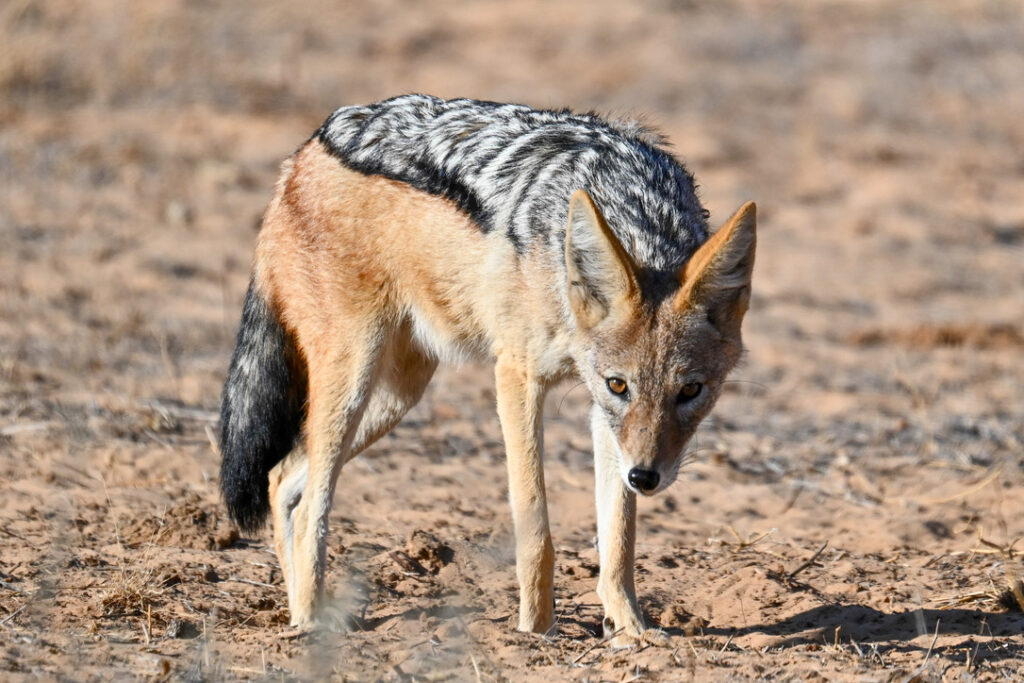

We had 6 days in KTP and had very little animal activity, which is apparently highly unusual (it wasn’t just us – very few people we spoke to had seen very much). Different people we spoke to had a different theory for this lack of activity – the full moon, a very dry season, a fire two years ago…whatever it was, we just hope that the animals are still just as plentiful, they just weren’t where we were. In saying that, we did have some fun animal interactions.
Our first meerkats:
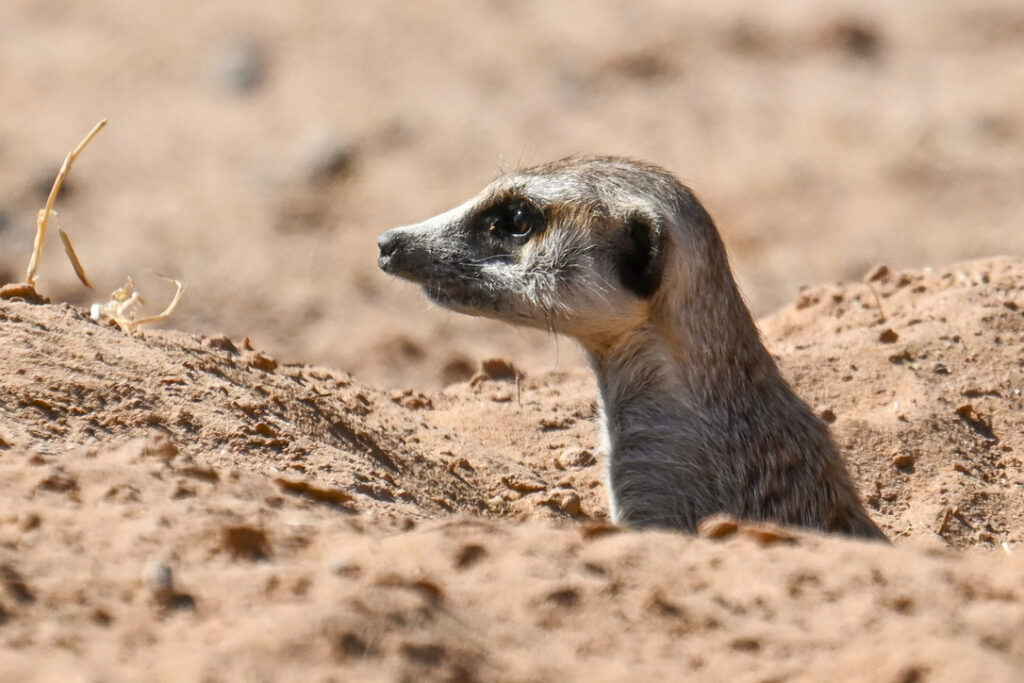
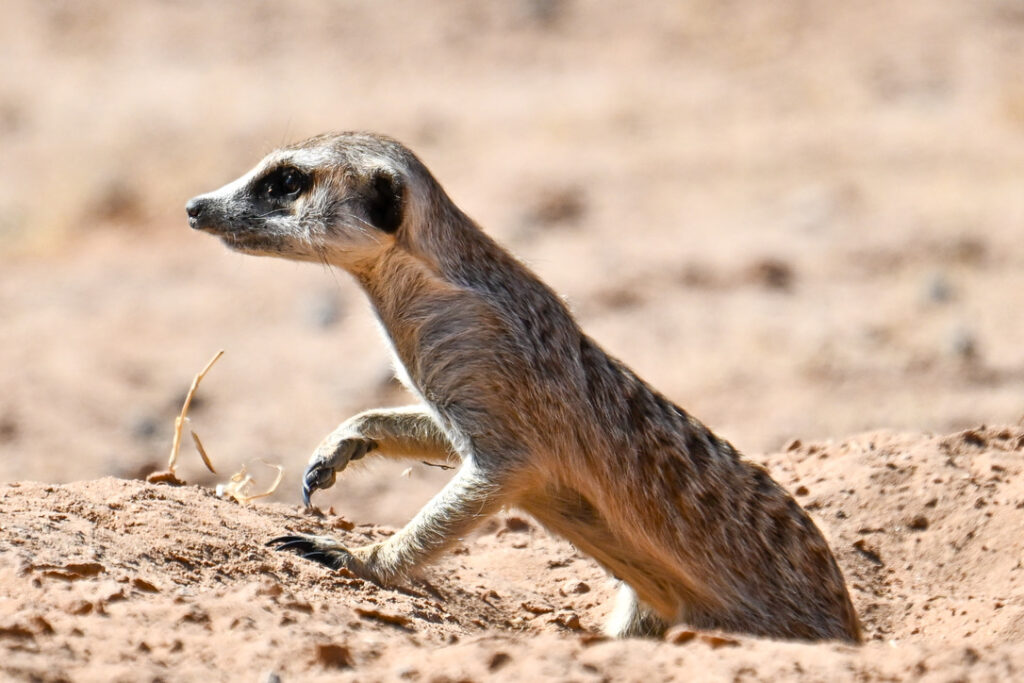
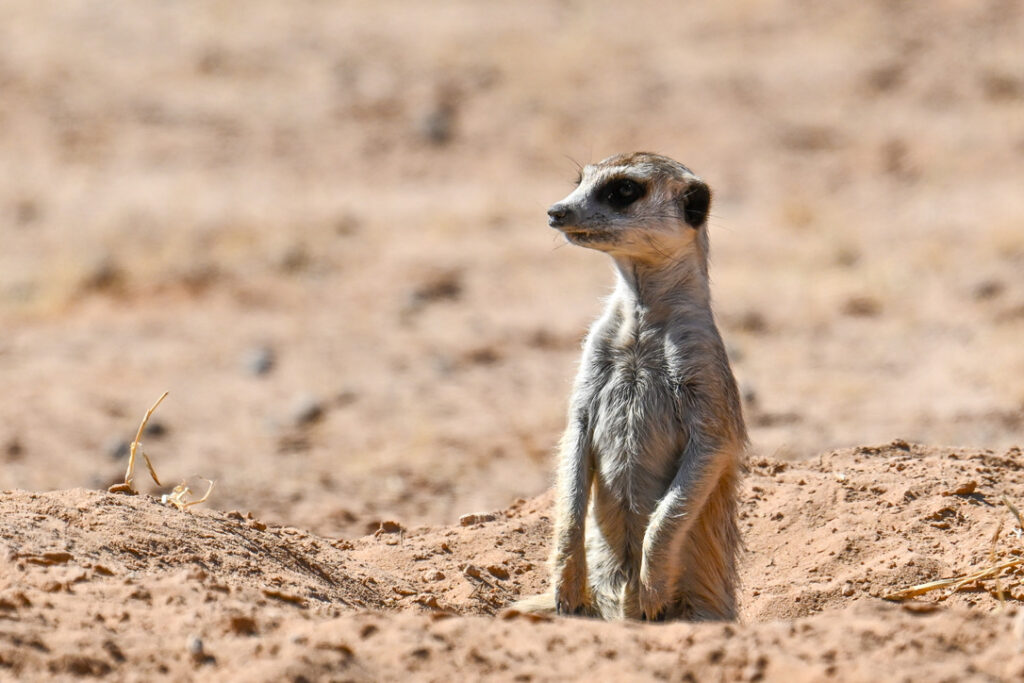
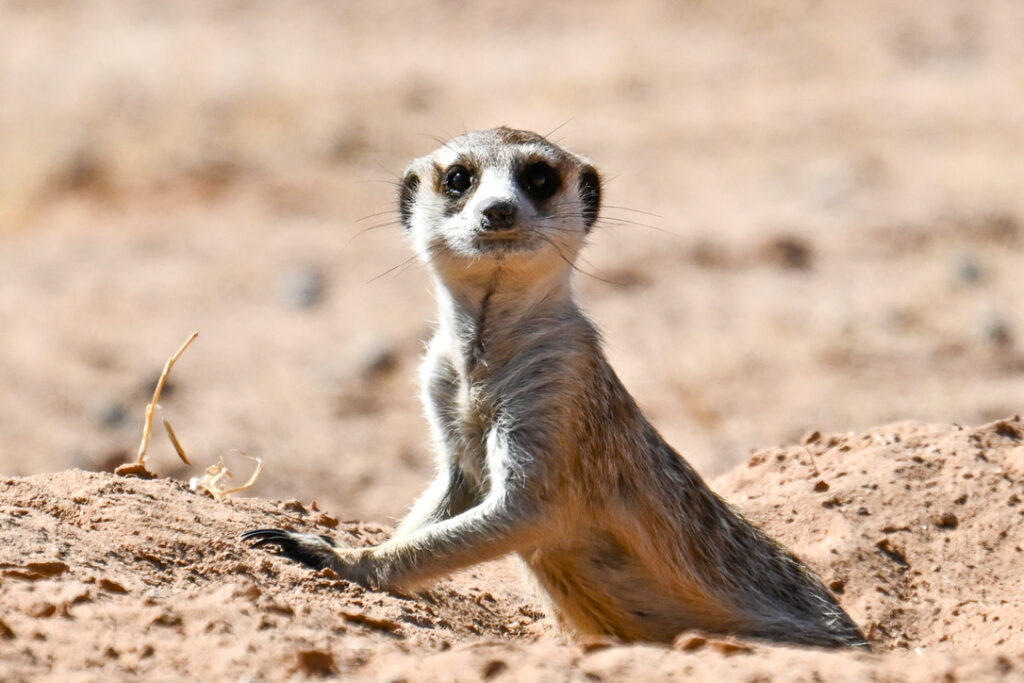
This beautiful spotted eagle owl:
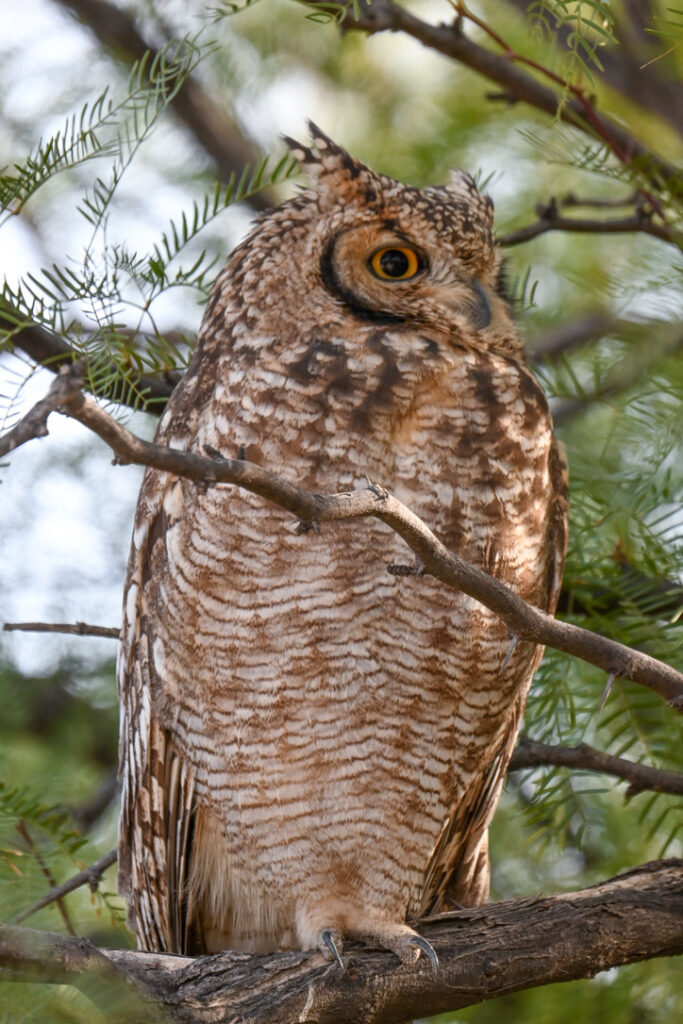
A crazy-big millipede:

A very sociable ostrich:
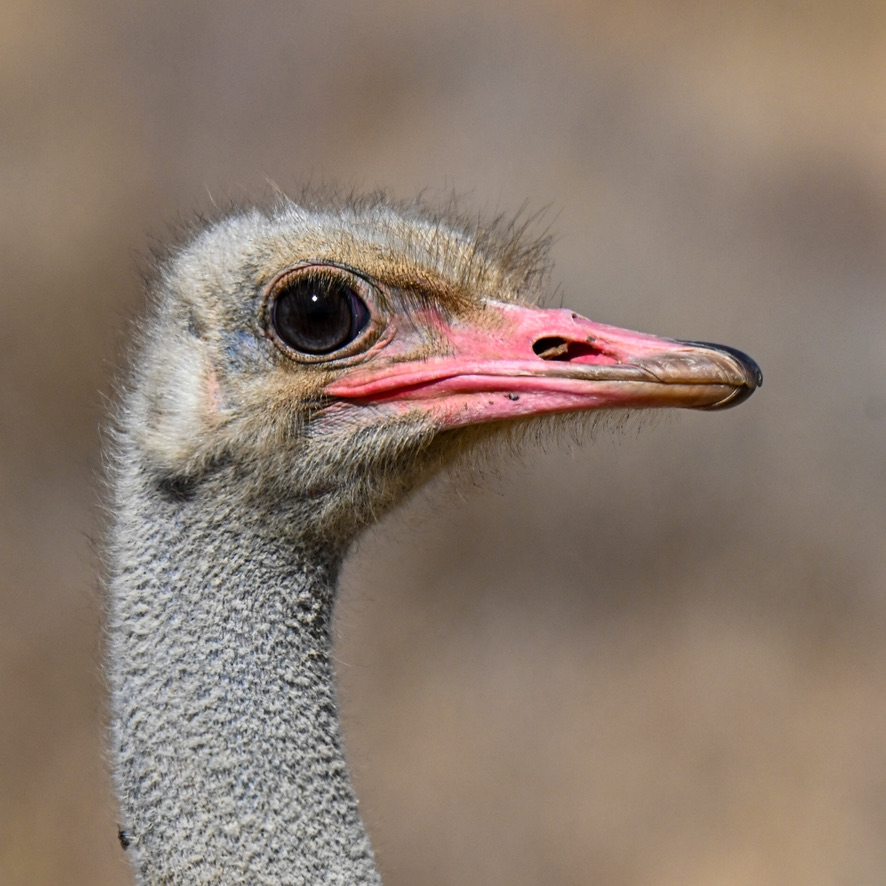

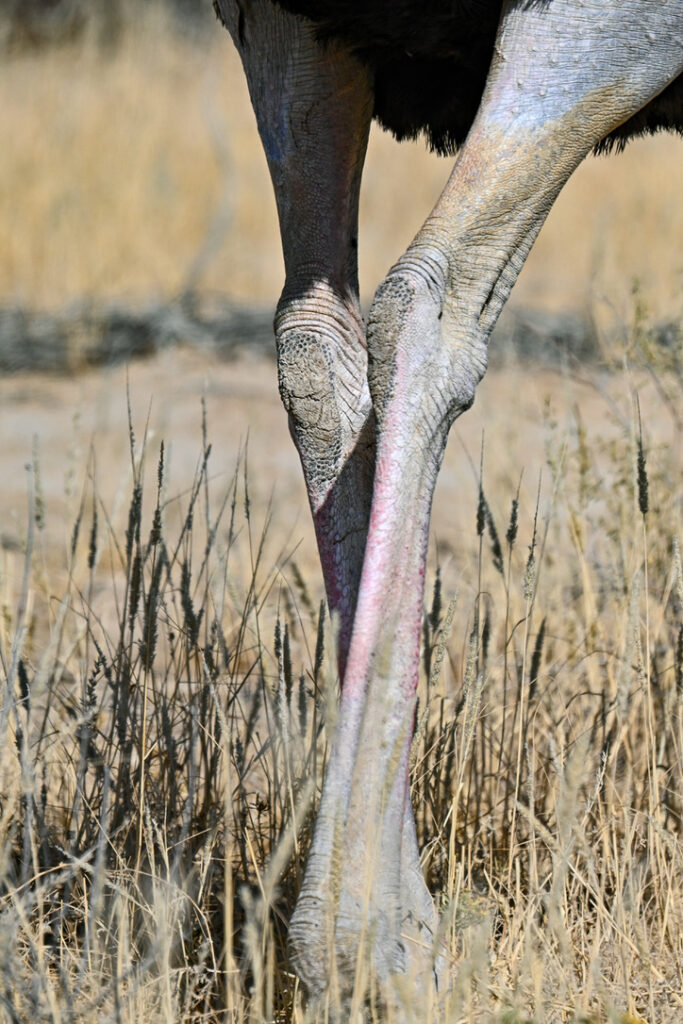

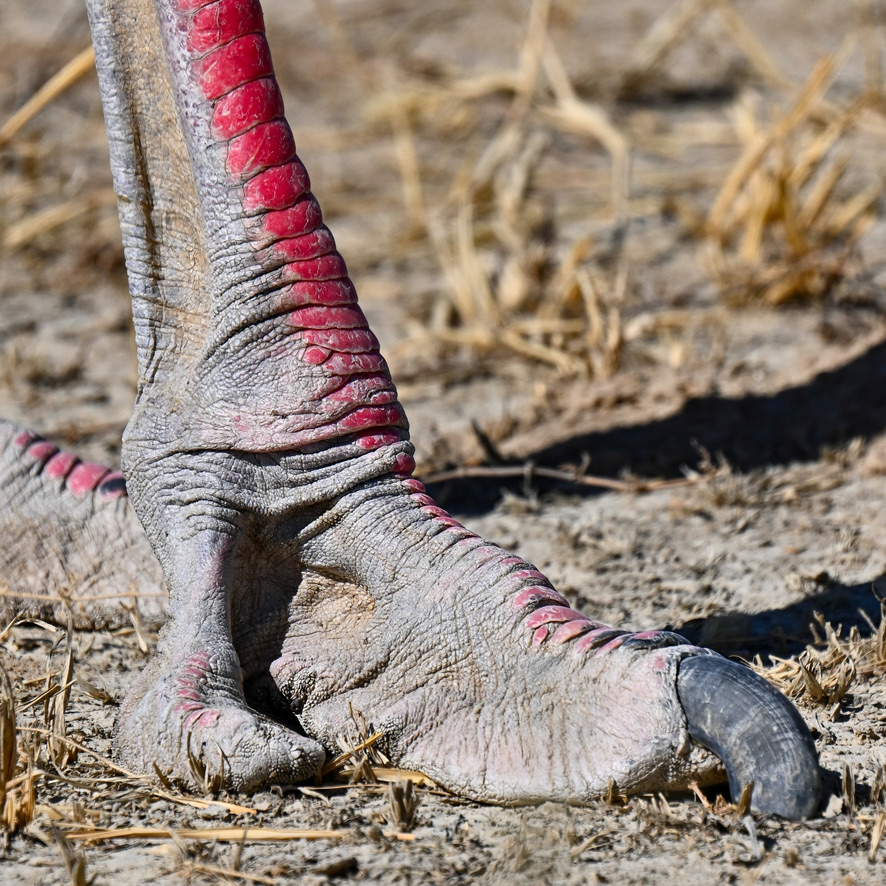
Lots of gemsbok (one of our favourite antelopes) and wildebeest:

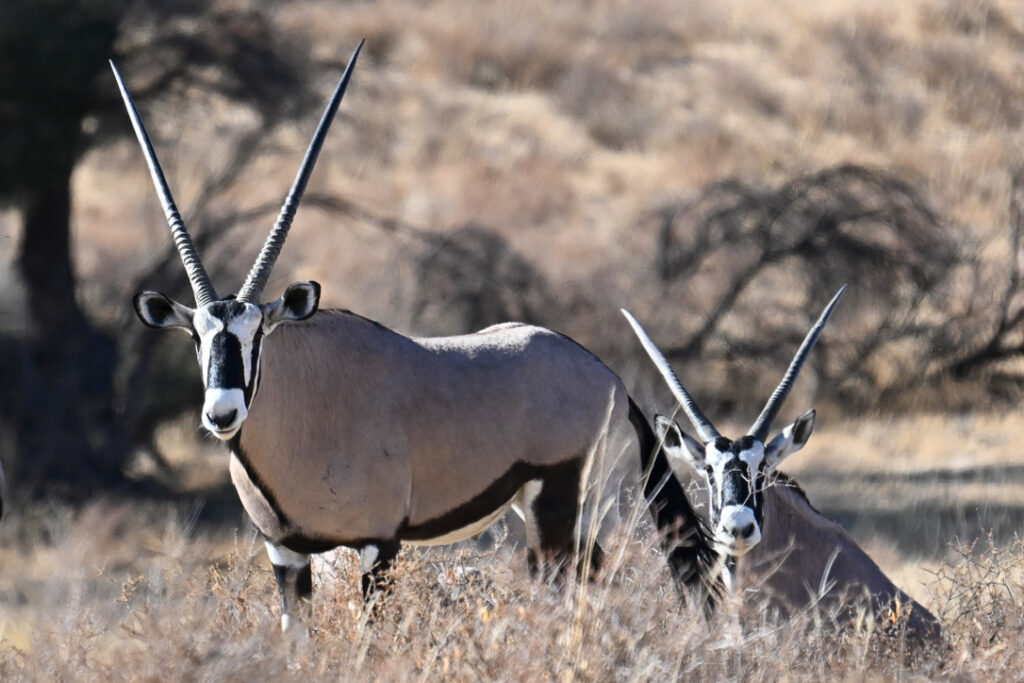
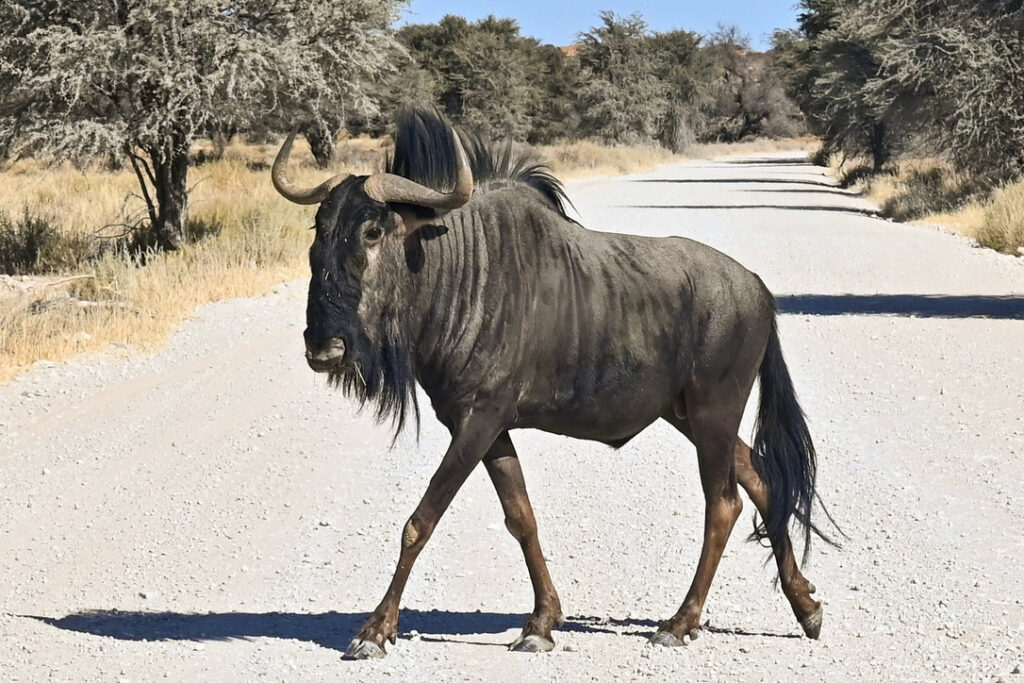
A variety of tortoise shells (from times when there is more water):
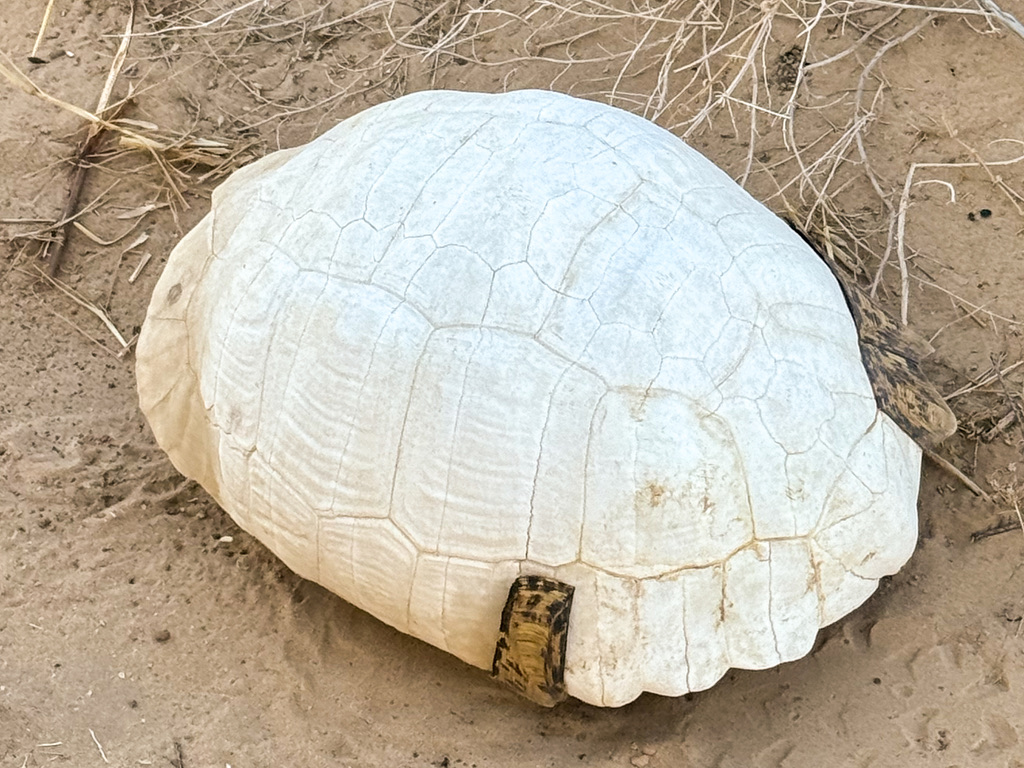
A giraffe that had seen better days:
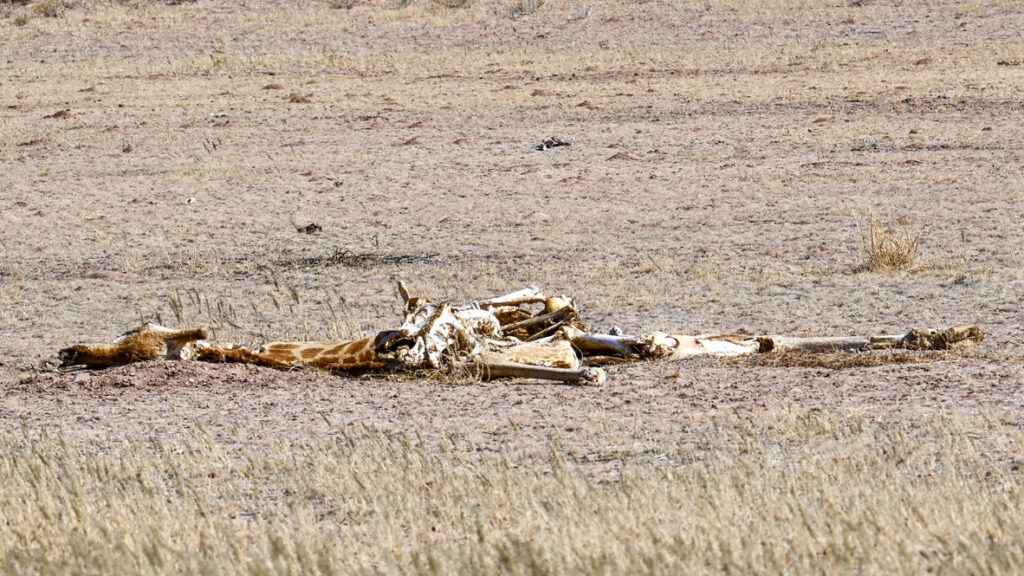
Lots and lots of squirrels. We play a lot of ‘woodland creature happy families’ and the rules are you have to ask “Please may I have Mrs Mouse?”. We giggled when Mr Squirrel made it quite clear that he was definitely MISTER Squirrel and not Miss, Mrs or Master Squirrel!

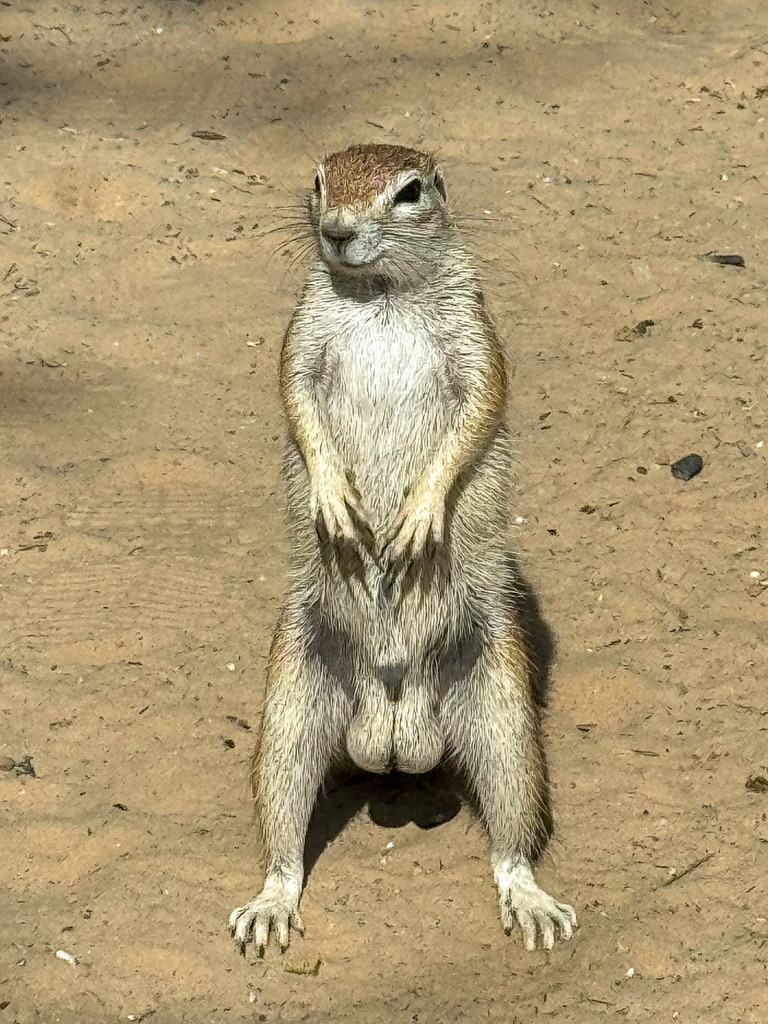
And of course, the views were beautiful and ever changing!
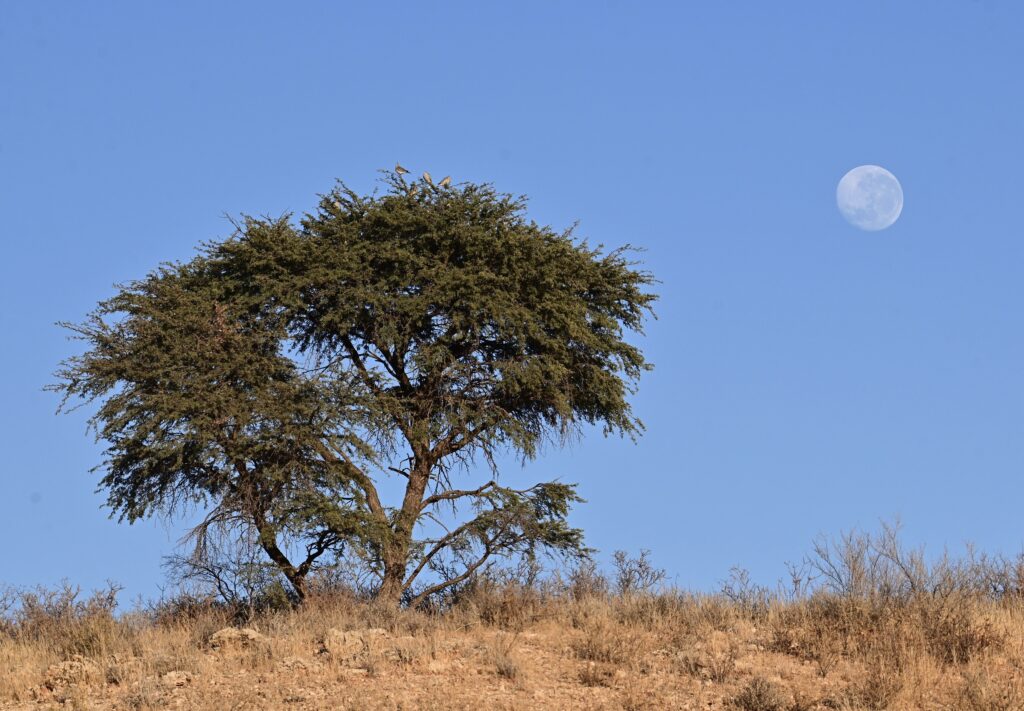
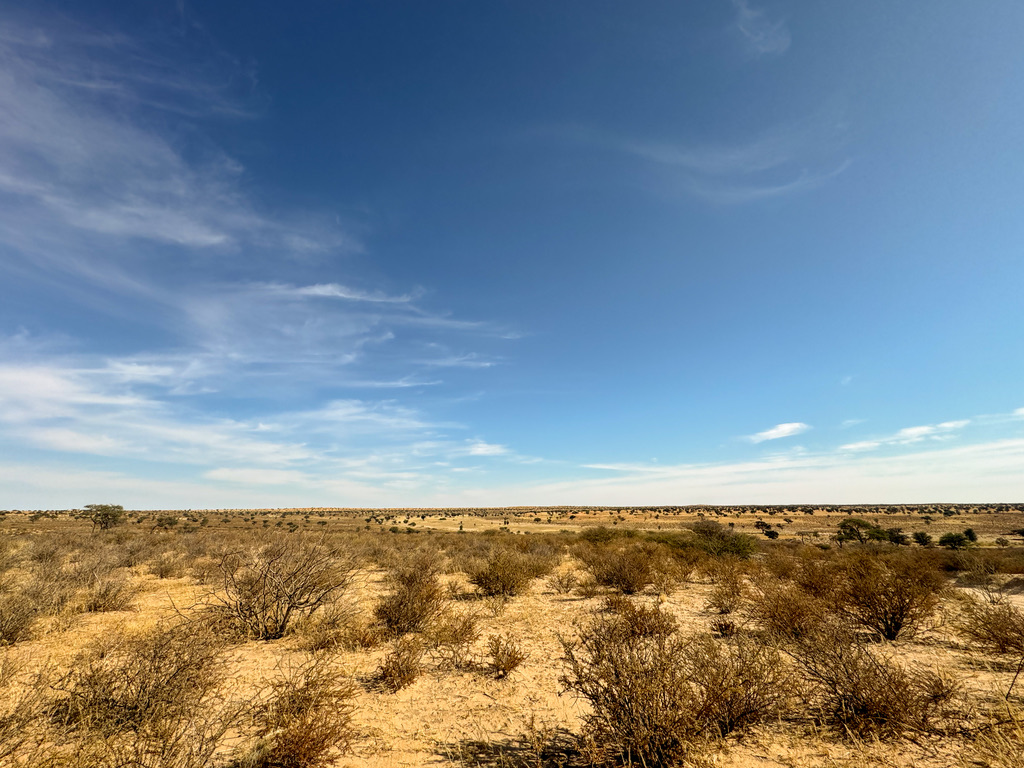
From KTP, we crossed back into Namibia for our final 10 days in Africa. Our first stop was an area quite different from anywhere we’d been called Giant’s Playground! Massive rocks were piled high upon each other as far as the eye could see with hardy quiver trees growing in between. It was really incredible!
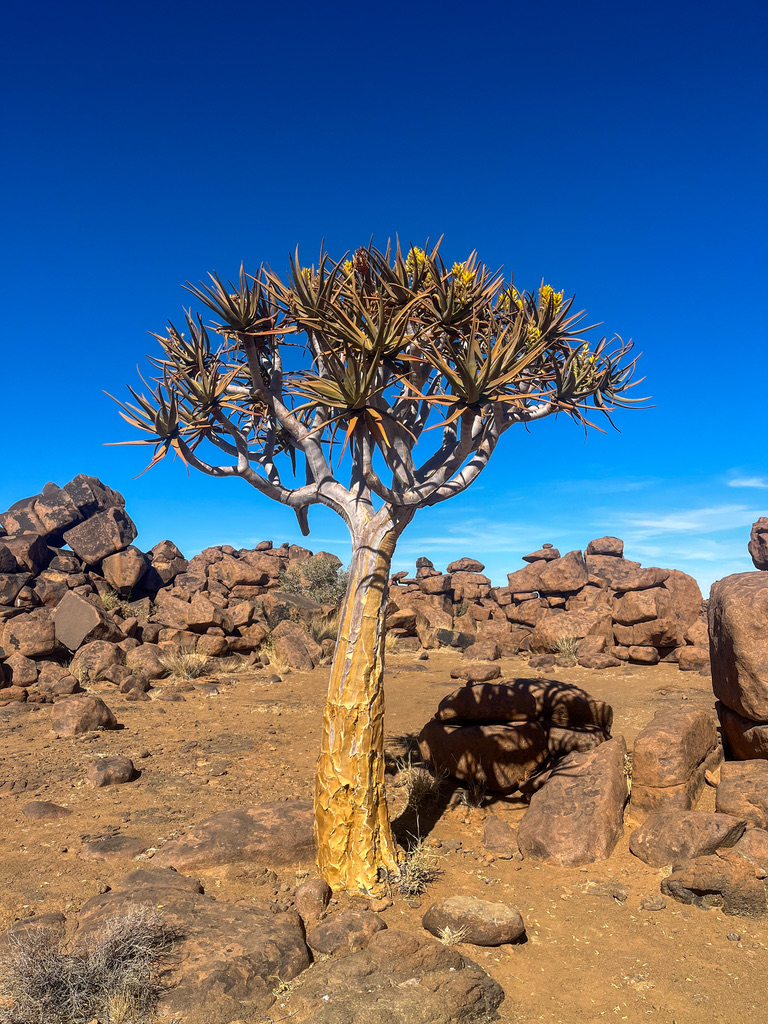
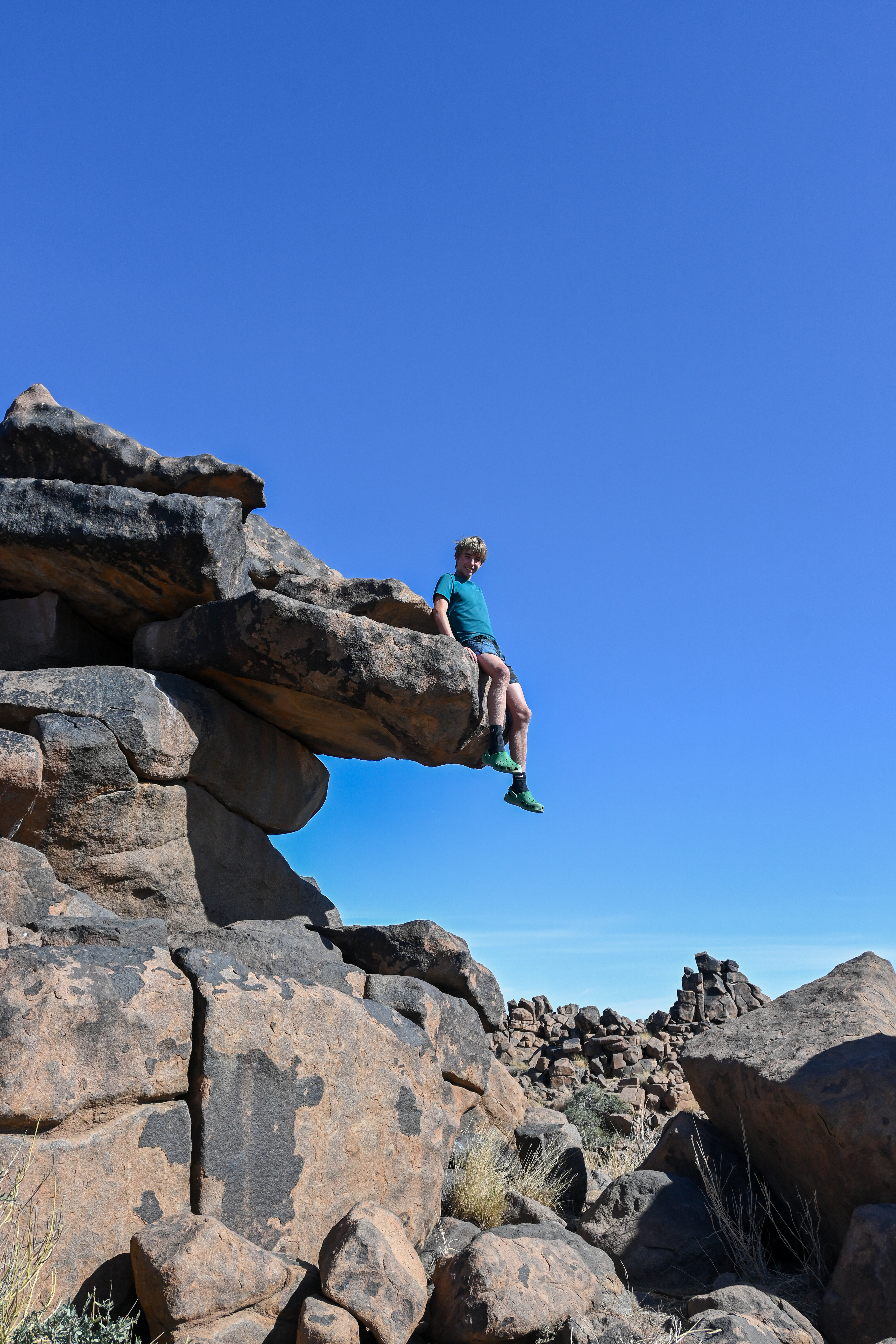
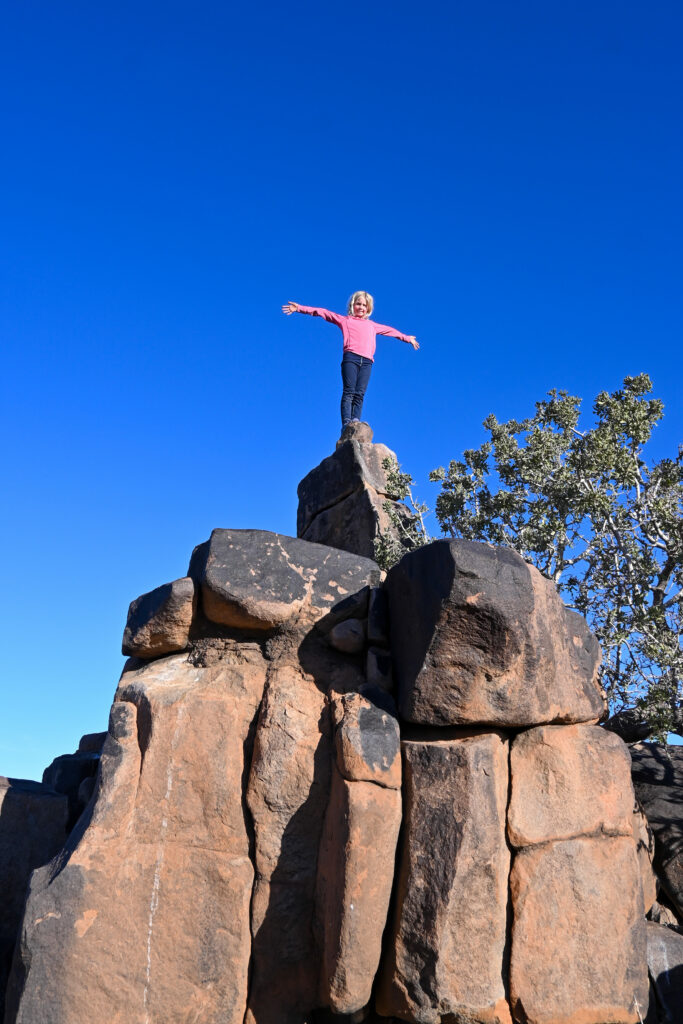
We then stayed at the wackiest campground with smaller versions of the rock piles, many quiver trees, and an eclectic collection of critters driving wheeled creations! It was so bizarre!
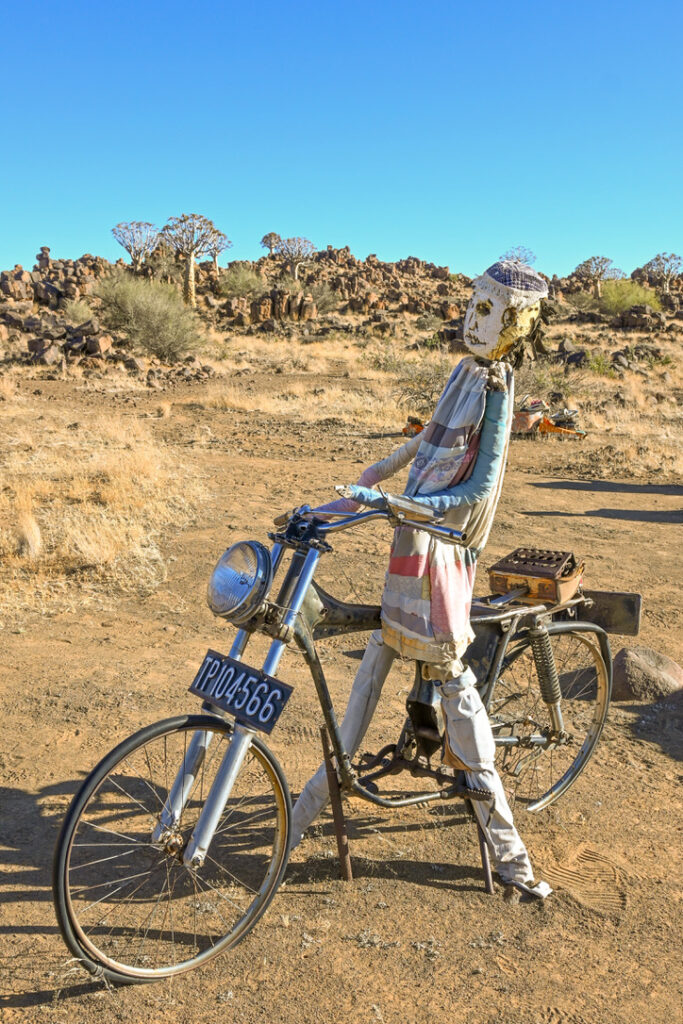
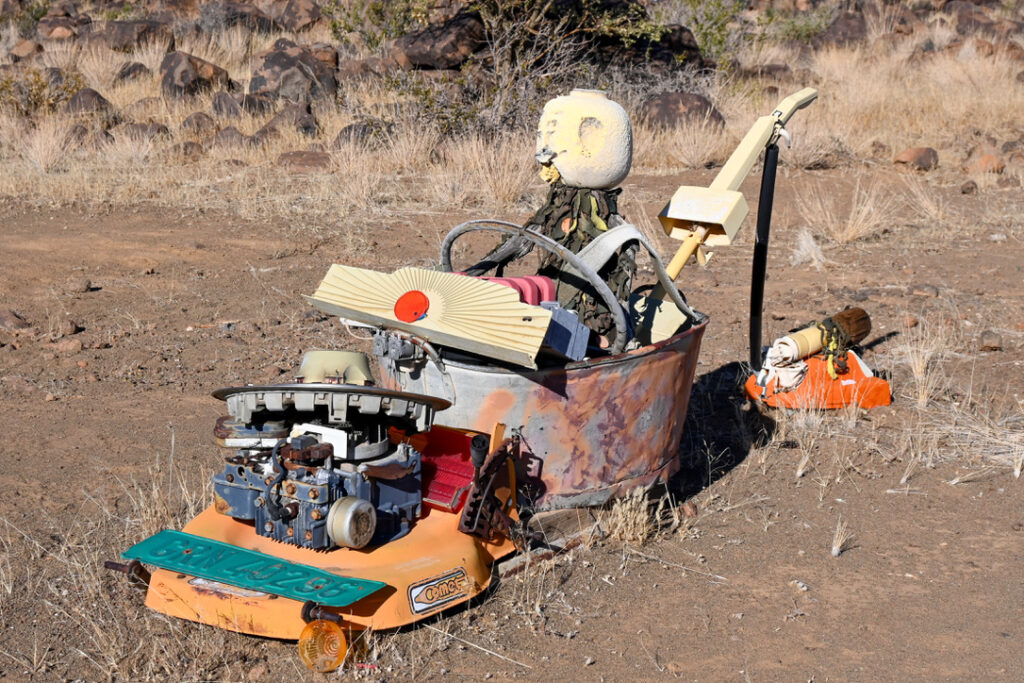
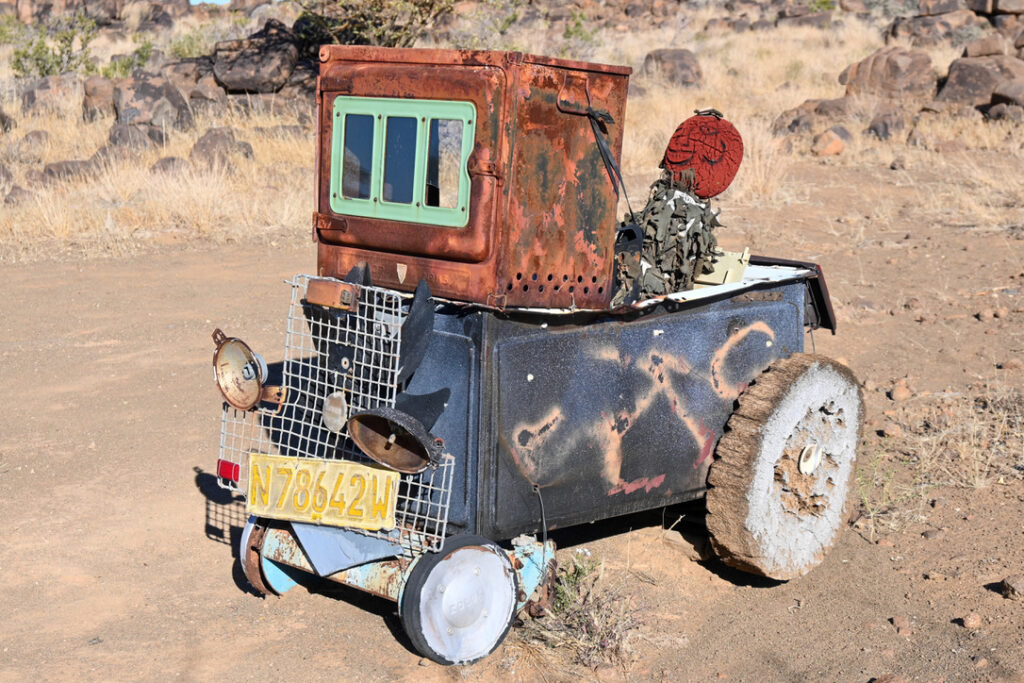

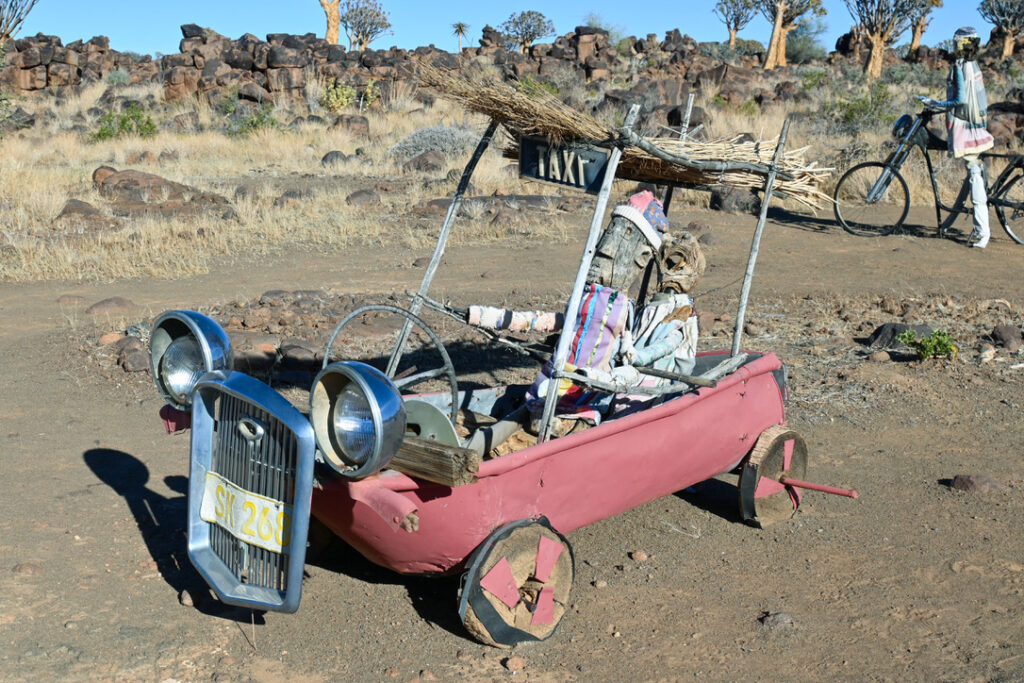
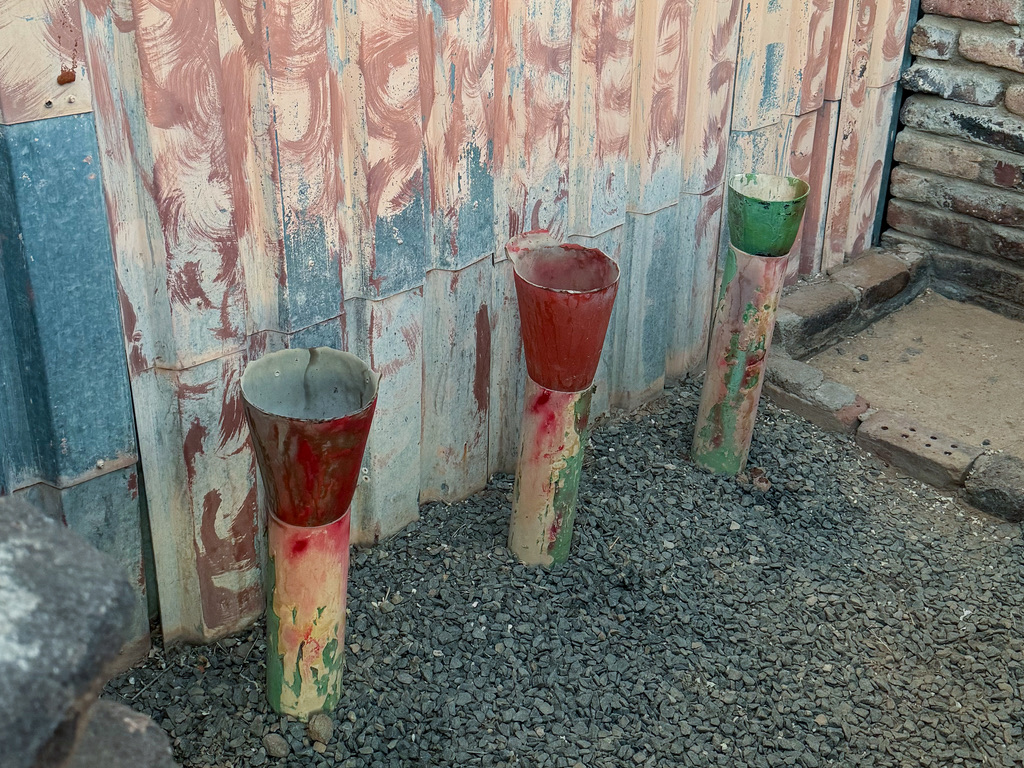
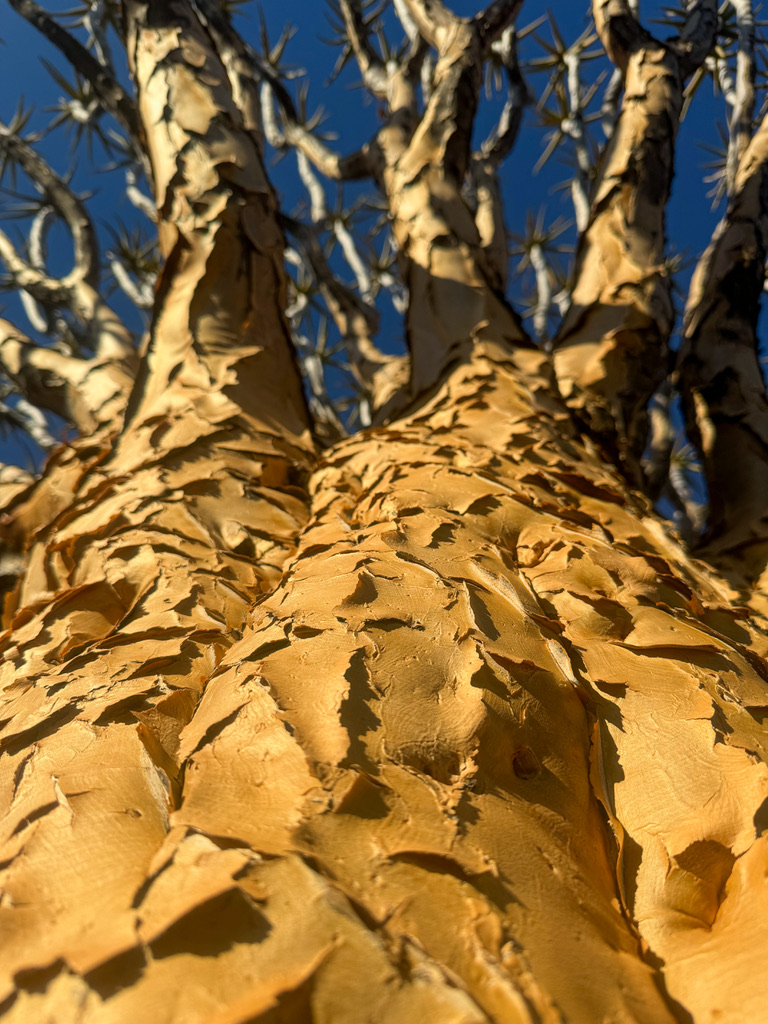



The quiver trees (so named because their hollowed-out branches are used by the San for quivers) were fascinating and made beautiful silhouettes at sunset and when the huge African night sky opened up.
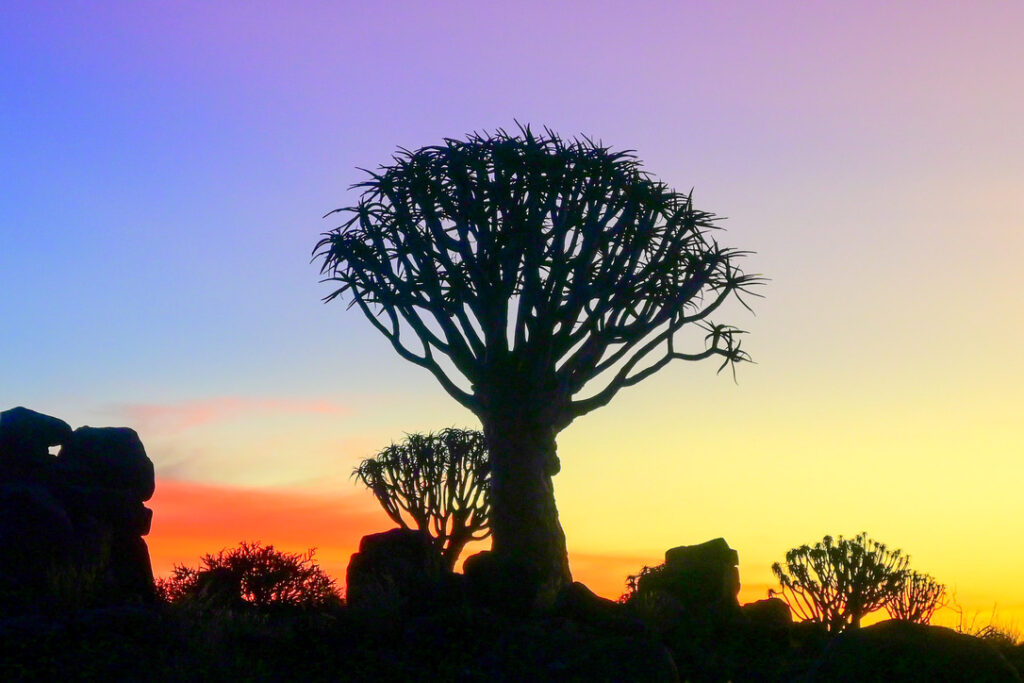
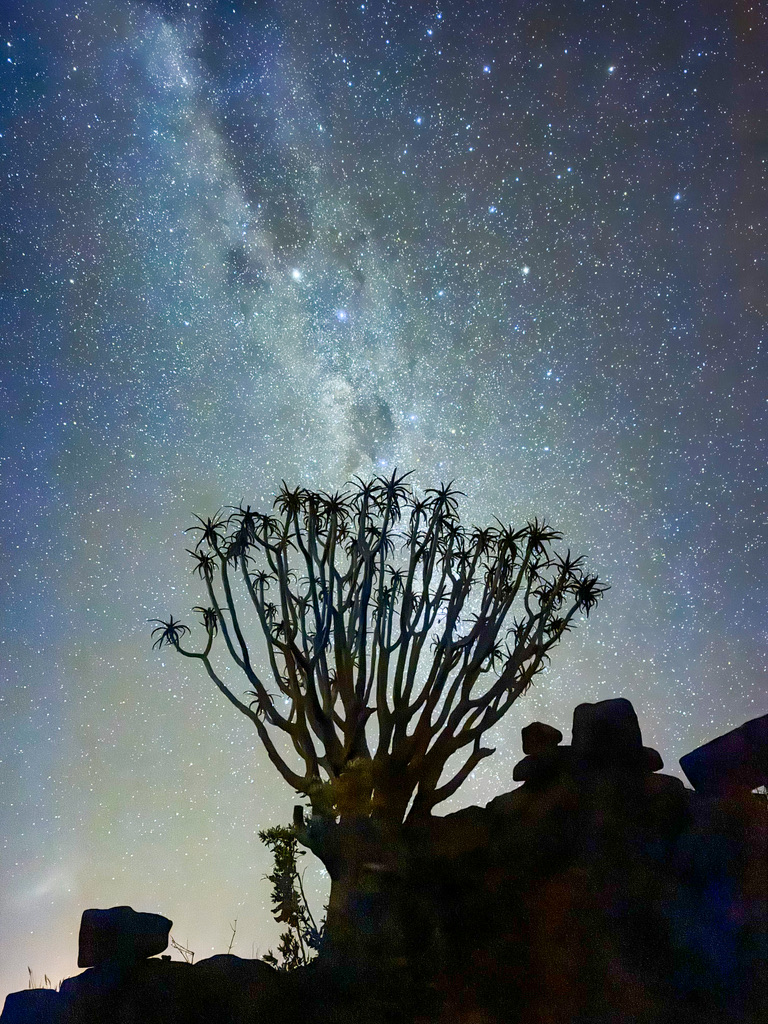
Driving in Namibia is so incredible with the giant African sky above, ever-changing landscape, and roads that go on forever in a straight line!
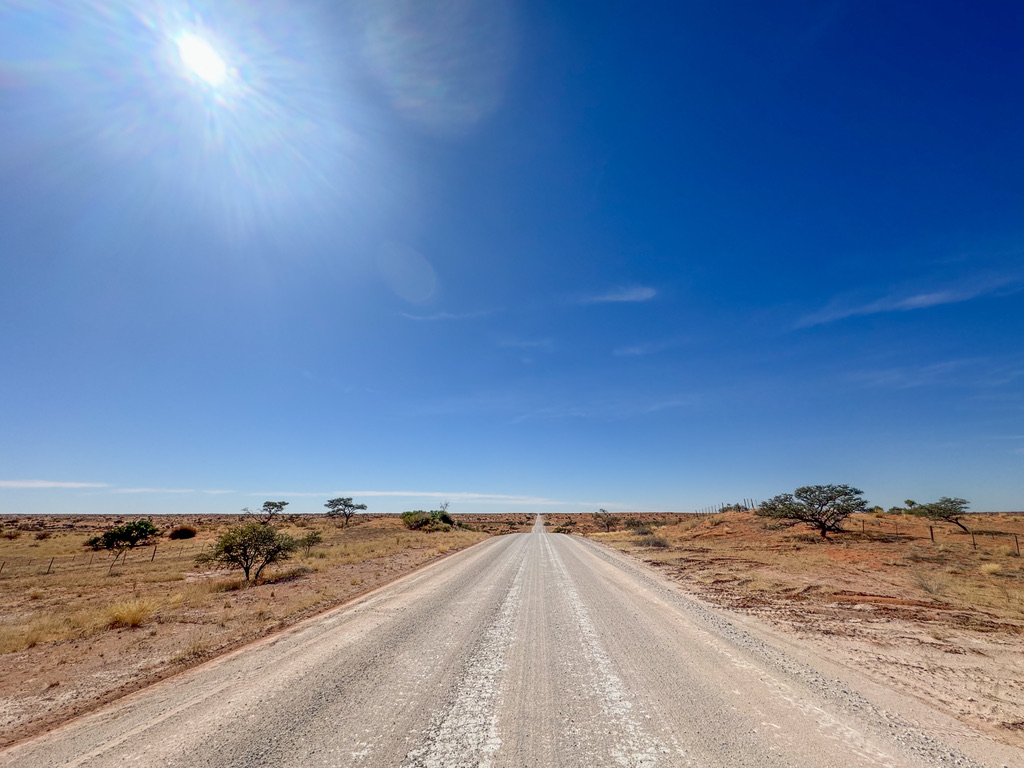

Our final national park was /Ai-/Ais-Richtersveld Transfrontier National Park (this transfrontier park straddles Namibia and South Africa). /Ai-/Ais means ‘scalding hot’ in Nama and is the name for the hot springs within the national park. Nama is one of 12 major ethnic groups in Namibia and the / is one of 4 clicks that is in many of the local languages. We have tried hard to learn and pronounce the clicks but they are tricky for our english-speaking mouths to get around!
Lots of the camps we have stayed in have had an unheated pool – perfect for the summer time when it can get so hot in Africa but way too cold for most people in the winter. Our water-loving kids, however, have swum in 10 of these pools, sometimes multiple times, despite the water temperature barely breaking 10 degrees! You can imagine their excitement when the /Ai-/Ais pool, fed partially with water from the /Ai-/Ais hot springs, was closer to 30 degrees!

The main feature of the /Ai-/Ais-Richtersveld Transfrontier National Park is the Fish River Canyon. This canyon is considered the second largest canyon on Earth (after the Grand Canyon) and was formed by a unique combination of tectonic, volcanic, climatic and erosional forces. According to San legend, the looping Fish River Canyon was gouged out of the earth by a gigantic snake, Koutein Kooru, as he frantically scrambled to escape as hunters pursued him into the desert. The canyon was beautiful at sunset and sunrise.



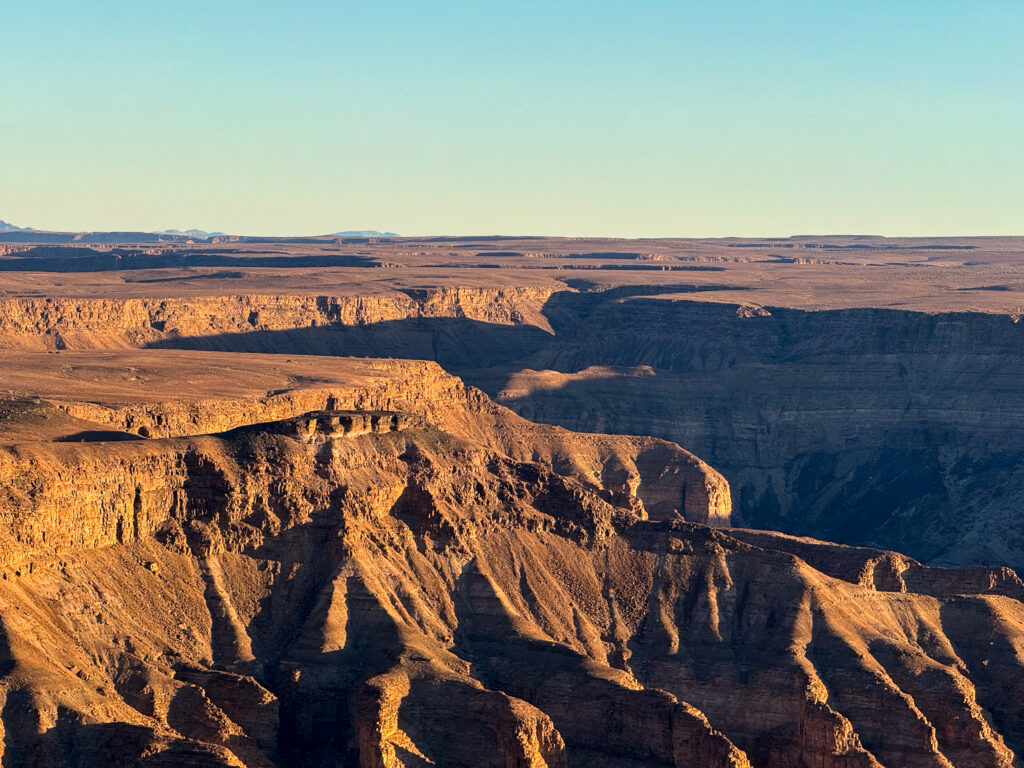

We have been extremely lucky with sickness over the past 7.5 months other than a few tummy bugs but were a little bit worried when Lucas got out of bed one evening with a massively swollen lip and itchy welts all over his body that seemed to be multiplying by the moment. The next morning we asked the campers next to us if they happened to be doctors and they said “no but our friend Neil is a world-renowned paediatric dermatologist and he’s staying in that room over there”. Neil immediately diagnosed it as Urticaria multiforme (a bad case of hives) and that it would be a reaction to Lucas stopping his malaria medication 2 days earlier. We had made the choice to take malaria medication whilst we were in the wet areas of Namibia and Botswana as malaria is present in those areas. We had been relatively free of side-effects and had been impressed with how the kids had taken their meds every morning when the alarm went off at 9am, and they had now completed their course of meds (from 2 days before we entered the wet area until 7 days after we left), so Lucas’s reaction was very unexpected. Poor Lucas spent 4 days feeling itchy and uncomfortable with welts all over his body and swollen lips, wrists and knees as his body dealt with the reaction. Logan and I still had 2 weeks left taking our malaria meds (we had to take them for 4 weeks after we left the wet area) so we were hoping there would be no further issues.
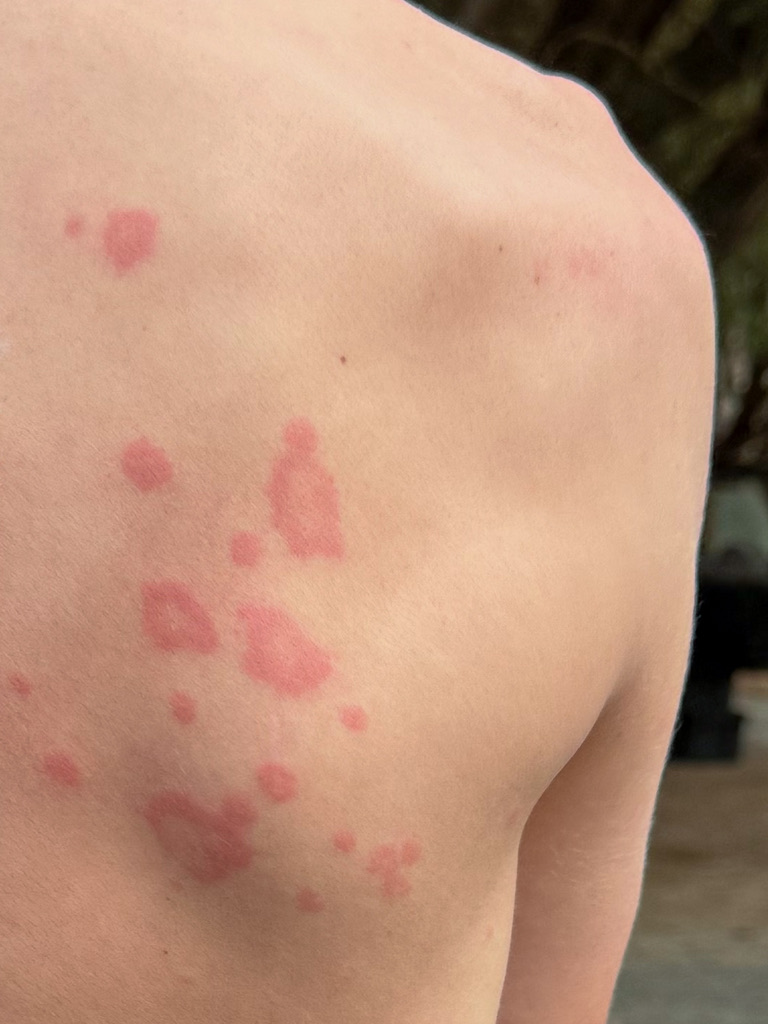
We spent our last night in Namibia wild camping beside the Orange River, just downstream from our very first camp in Namibia 57 nights earlier. It felt like we’d come full circle and we felt a strong sense of gladness and gratitude for the incredible adventure we’d had in Namibia, Botswana and Zambia. We felt no urgency to leave our campsite the next morning so we decided to FINALLY make the chocolate puddings we had bought weeks earlier – we thought we’d make them for the kids’ birthdays but bought the ginormous cake instead and Zara had asked almost every day since then to make them. Logan and Zara put their campfire skills to the test to bake them in a pot over the fire. YUM!



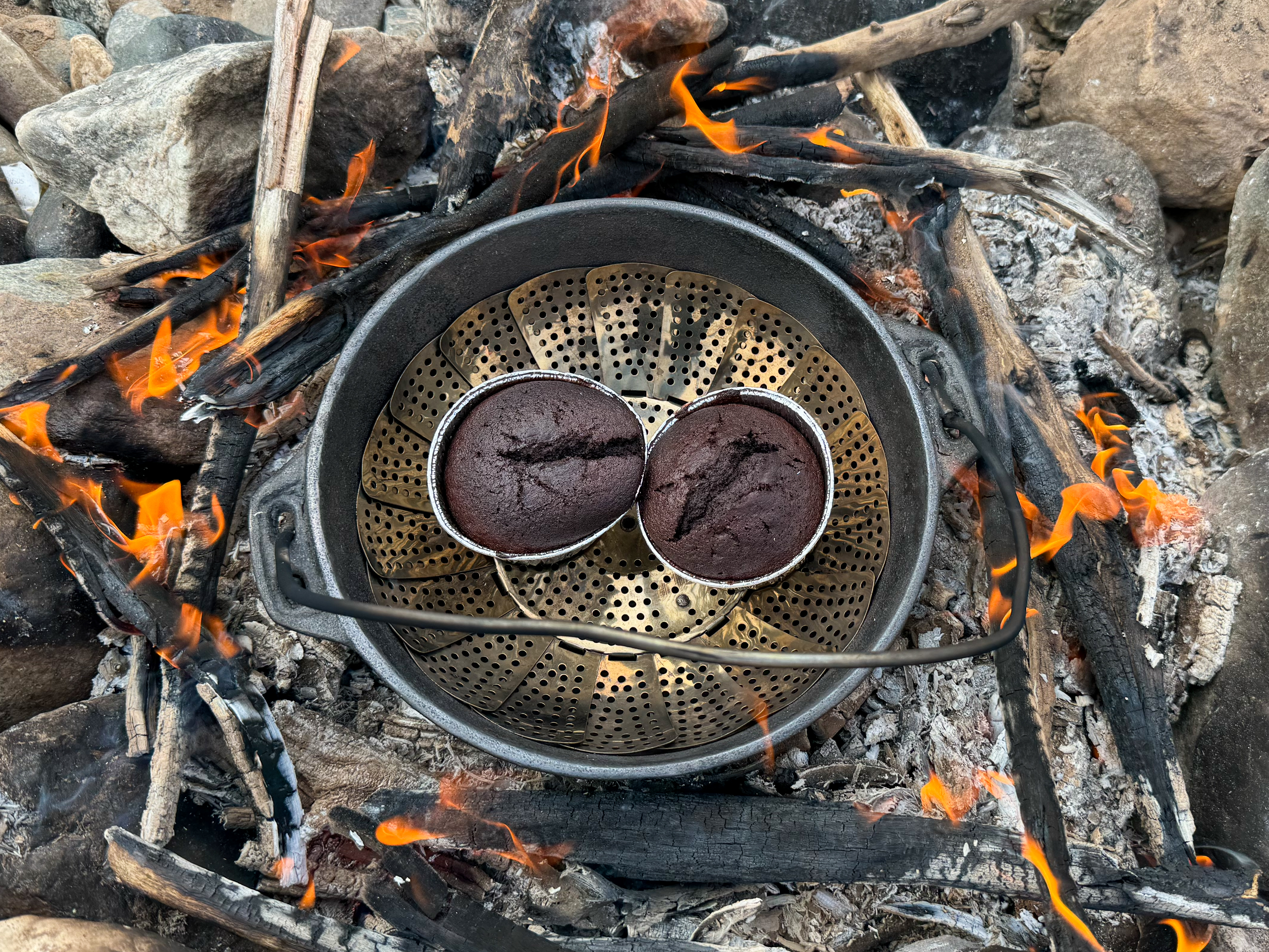
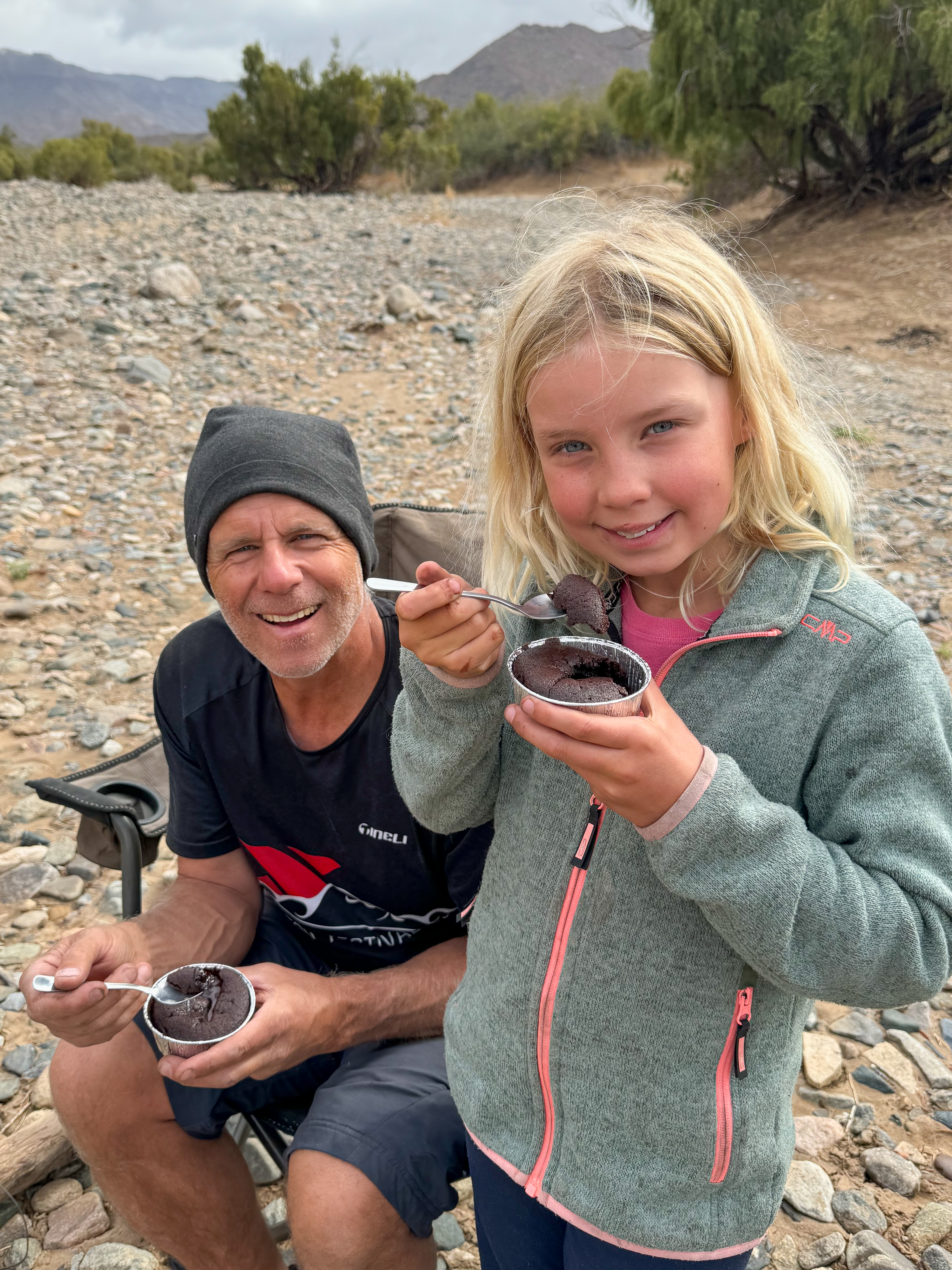
Zara also created this adorable flute – what it lacks in music-making it makes up for beauty!
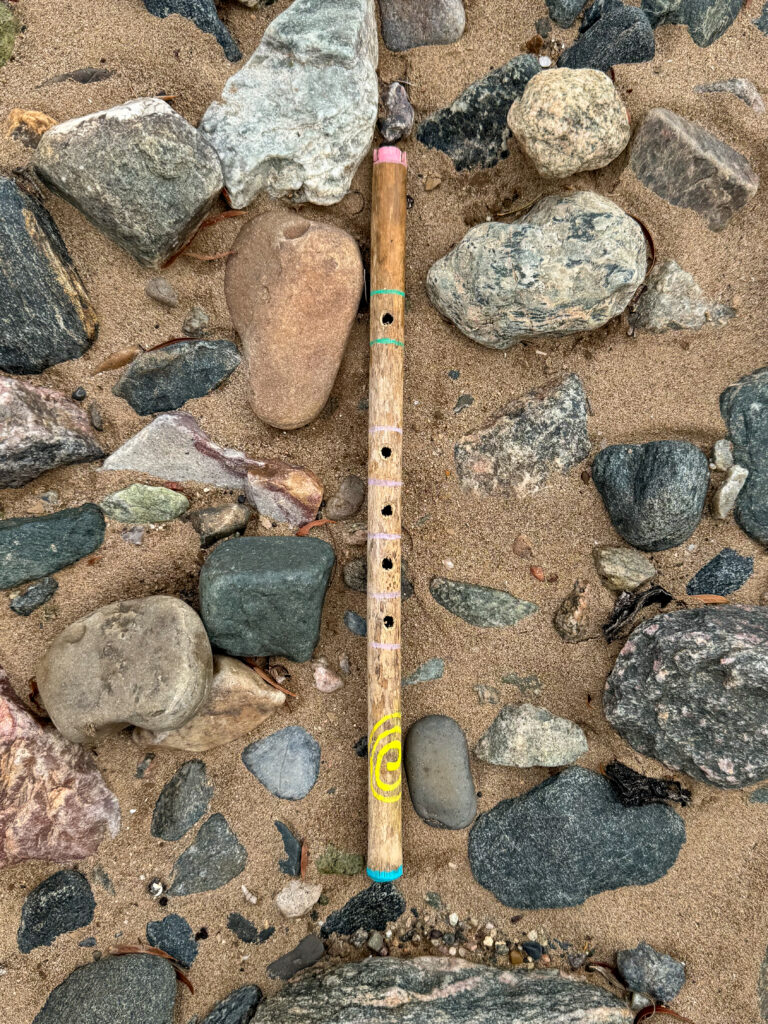
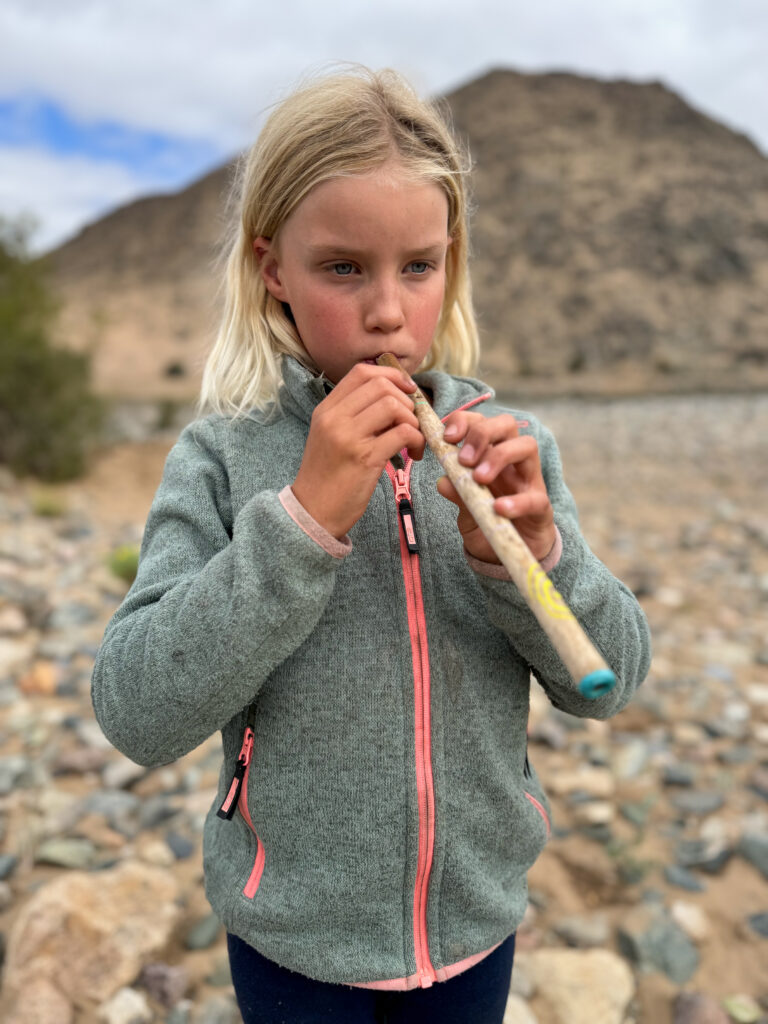
We crossed the border back into South Africa via a pontoon at Sendelingsdrif. This border crossing has only recently reopened post-covid and still only sees about one quarter of the tourists from pre-covid times. There has been evidence everywhere we’ve been in Africa that tourism has been slow to bounce back here – we’ve been the first people through a park gate for 3 days, seen many places that look like they used to be humming now closed up, and here at Sendelingsdrif where 2 pontoon drivers make one short trip once every few hours. But despite what must be some seriously boring days at work, every person we’ve met has given great service with a smile – and they must all be very grateful for what appears to be limitless mobile phone usage to watch football, play games, and chat with their buddies online when they don’t have a customer!
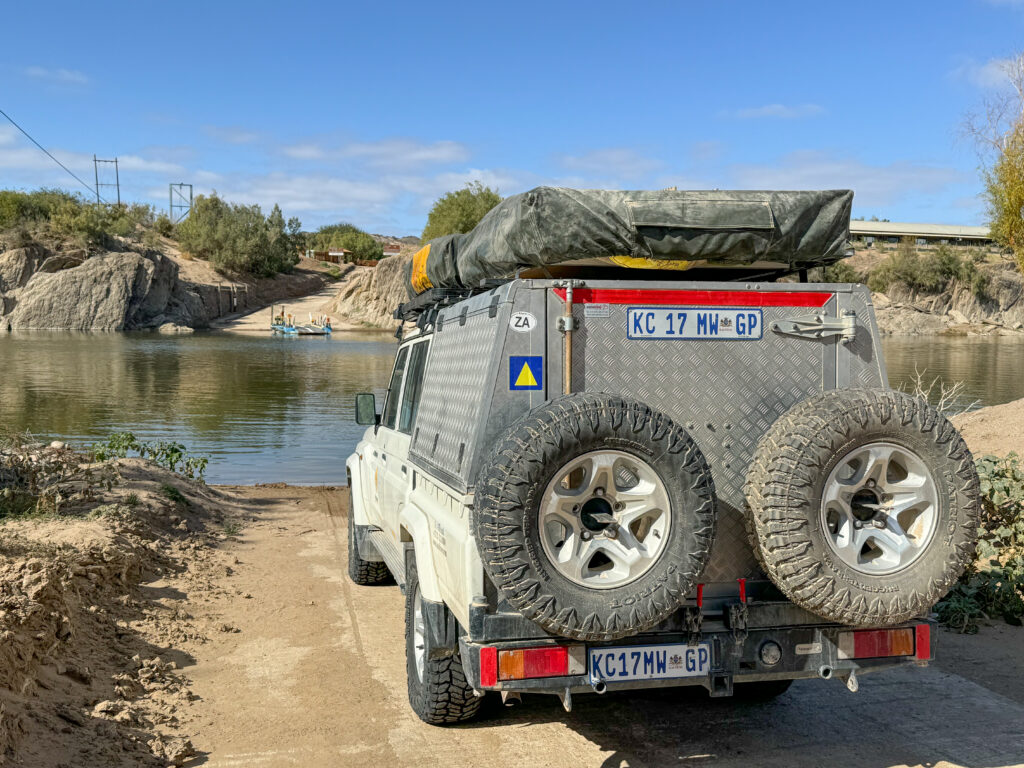
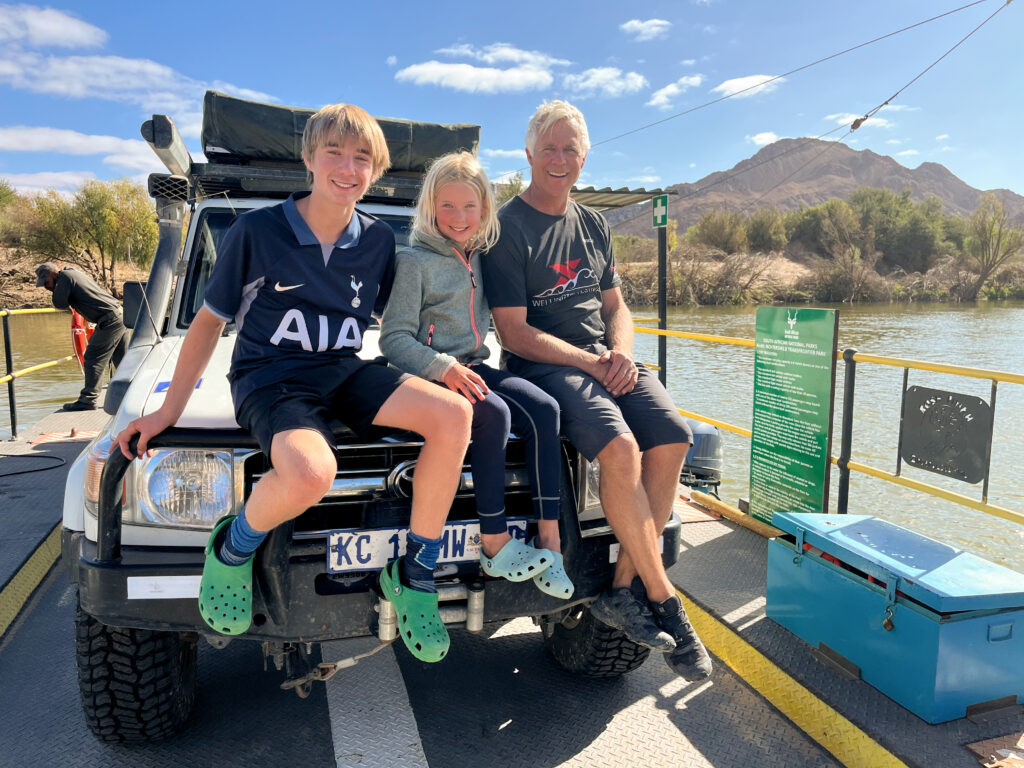
On a sad note, we were shocked to hear about the wildfires that ravaged Jasper. Among so many other places, the amazing Hostelling International hostel we spent 6 nights in over New Years was completely destroyed. We were glad to hear that everyone was evacuated safely but can’t even imagine how it feels to be there right now.
Our final 7 days in Africa were spent slowly making our way back to Cape Town via the pretty west coast of South Africa, using our iOverlander app to take us to some beautiful wild camping spots.

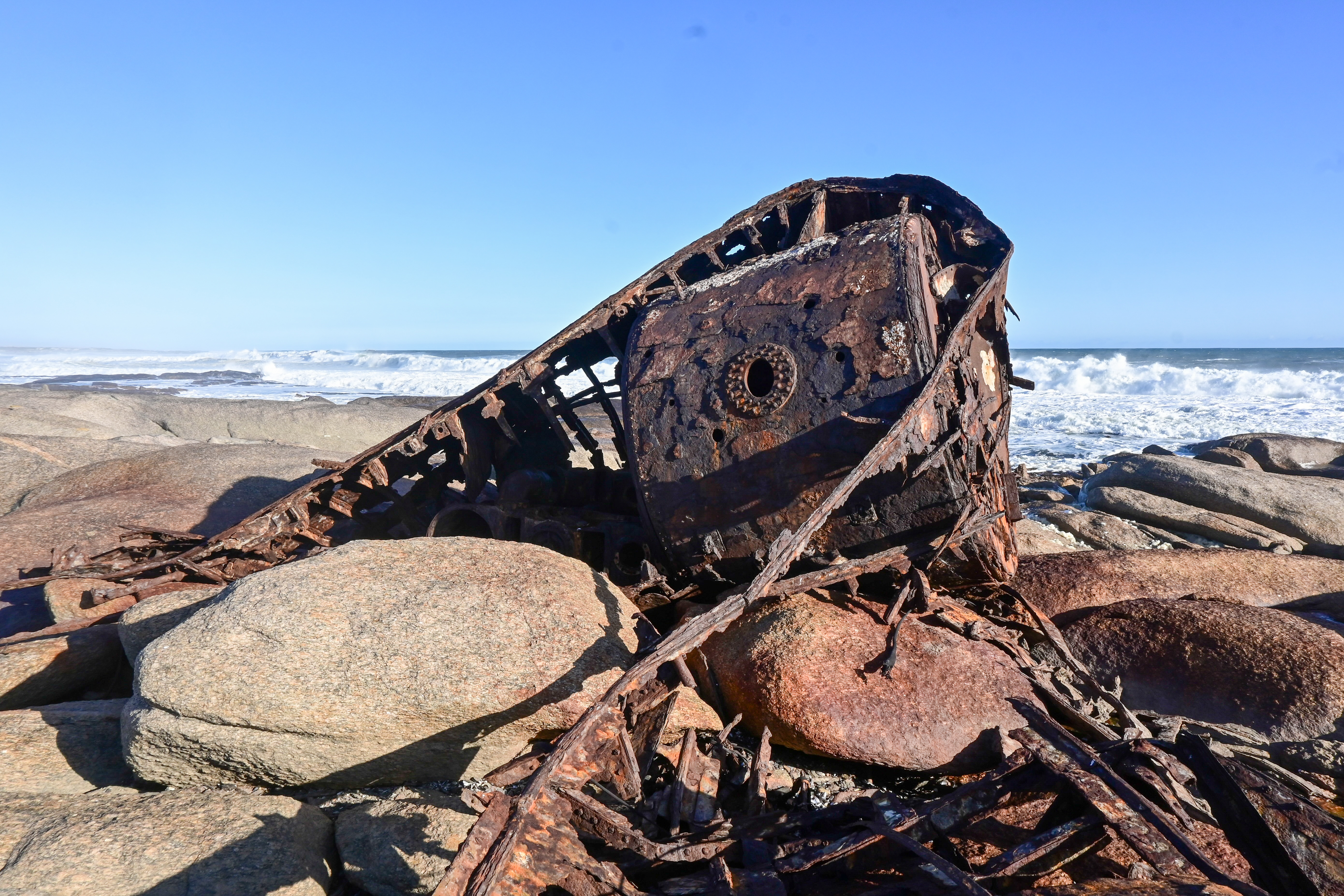

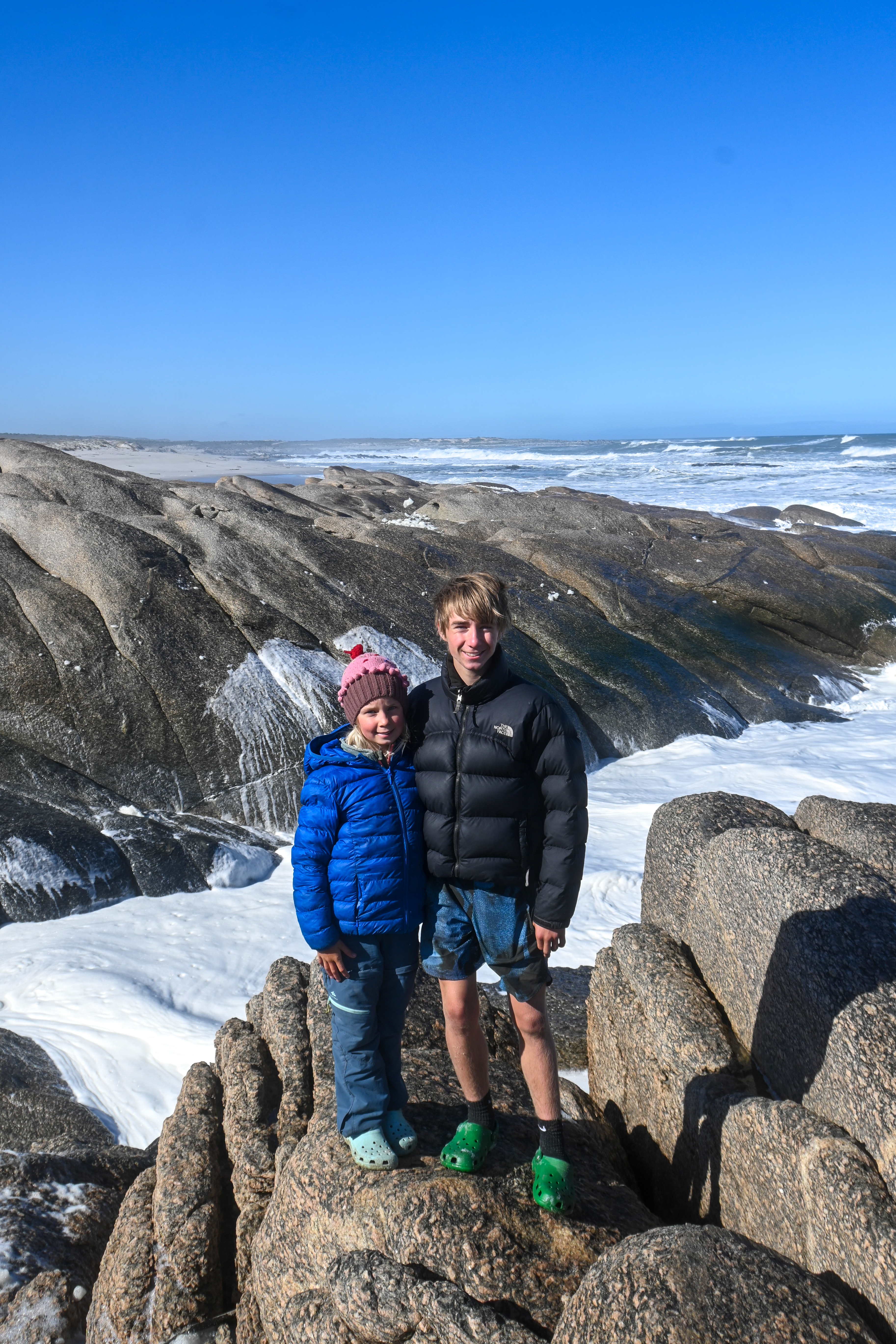
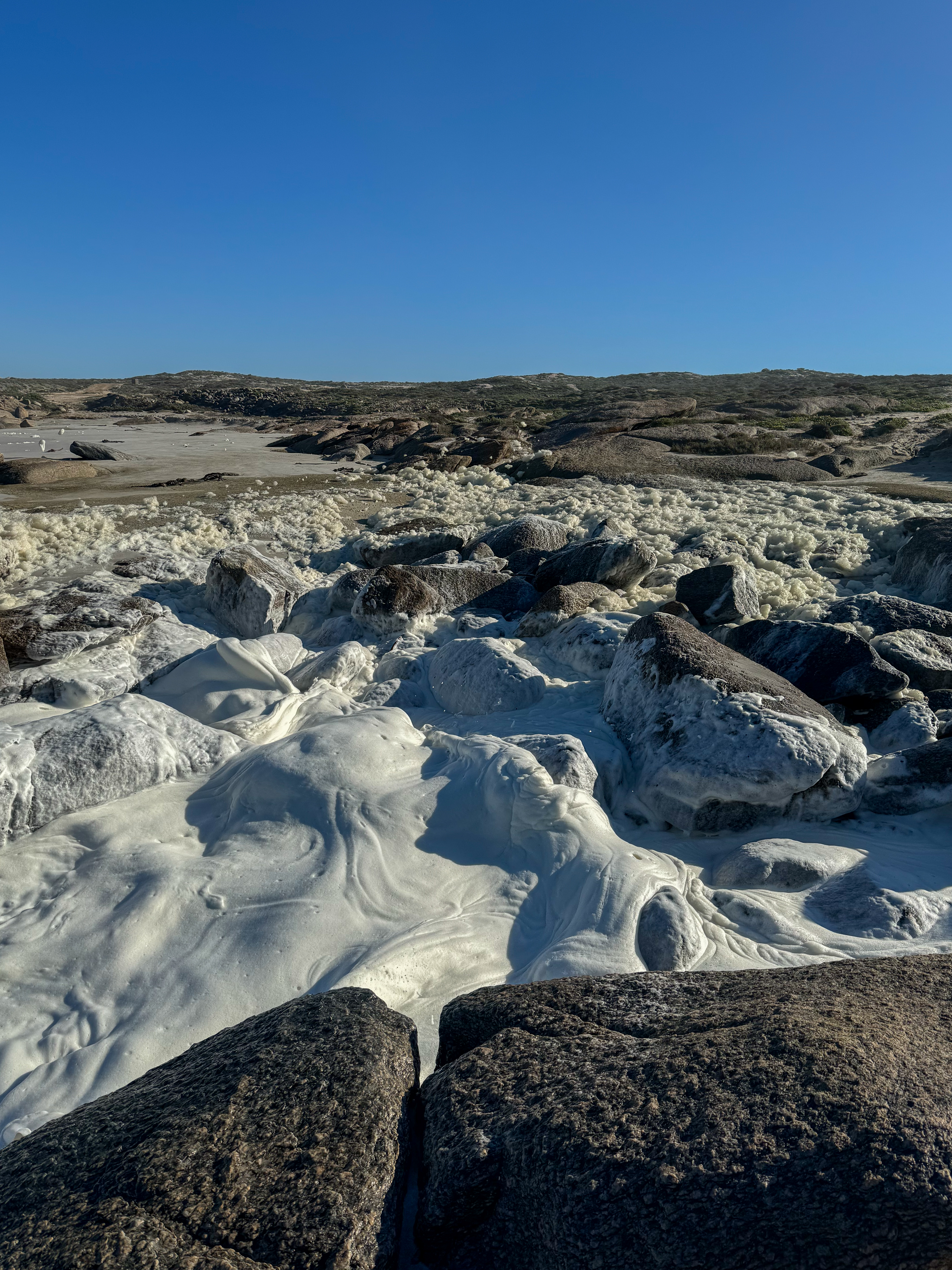
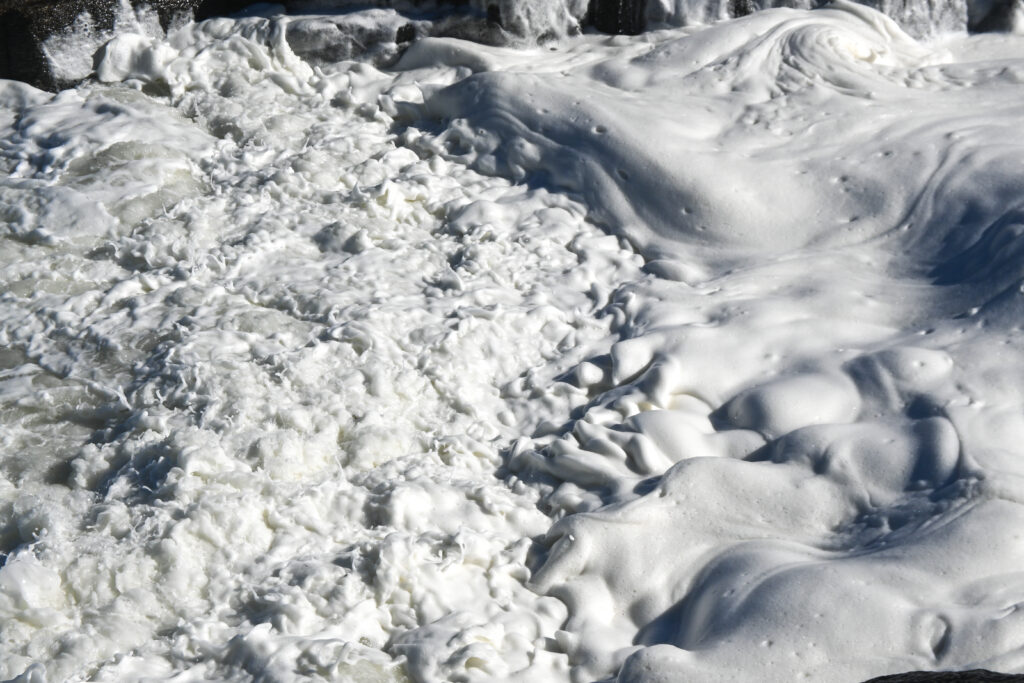
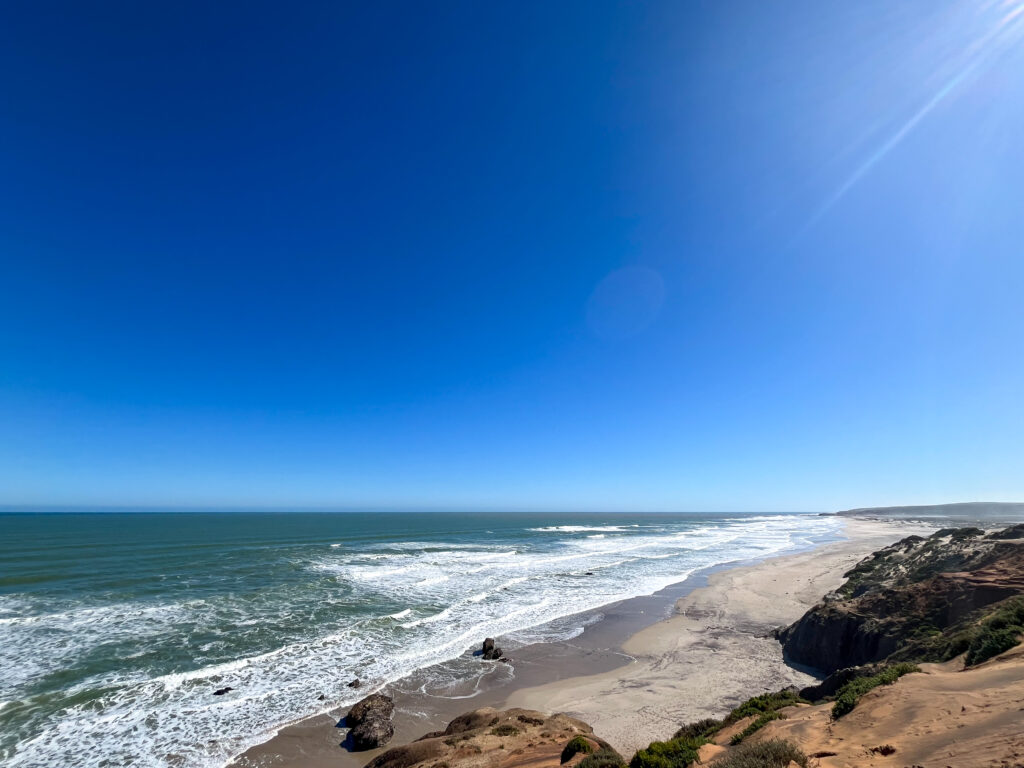
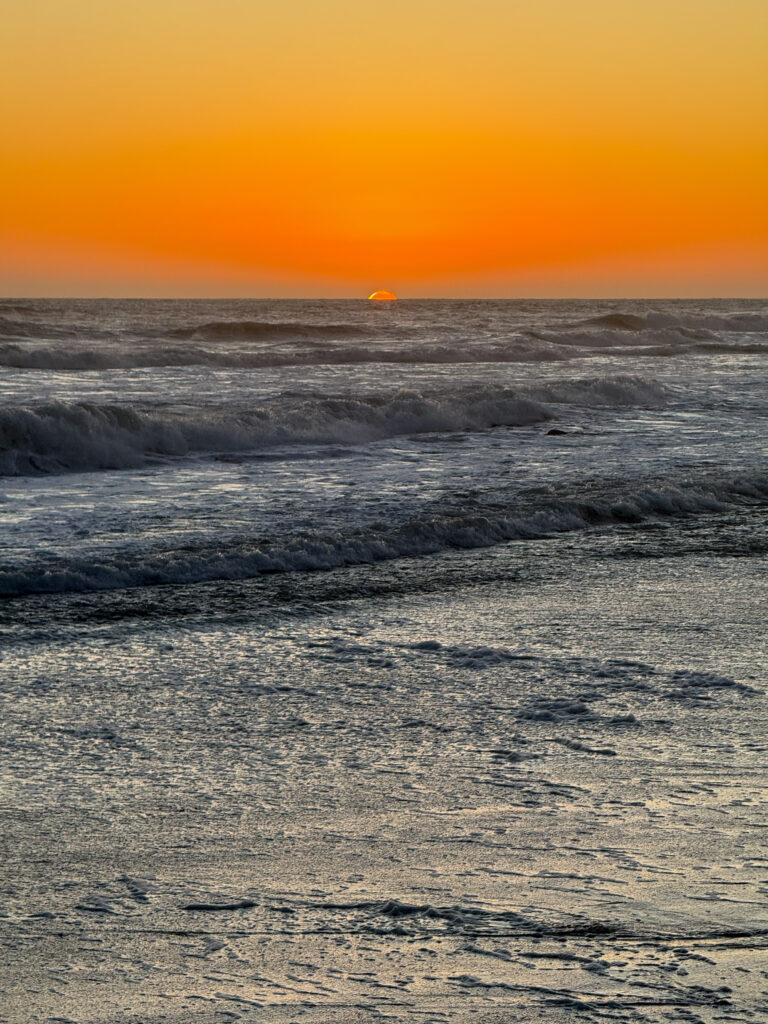
One of these pretty spots, south of Hondeklipbaai, had some comments on the app regarding the sand roads being pretty soft in places. After driving hundreds of kilometres on some pretty marginal sand roads in the last 2 months with Jungle Man Logan negotiating many, many soft spots, we weren’t phased. We did a bit of a recky of the area and decided on our spot for the night just over there when we suddenly found ourselves wheel-spinning in the sand. Logan used all his usual skills for getting us unstuck but we just became more stuck.

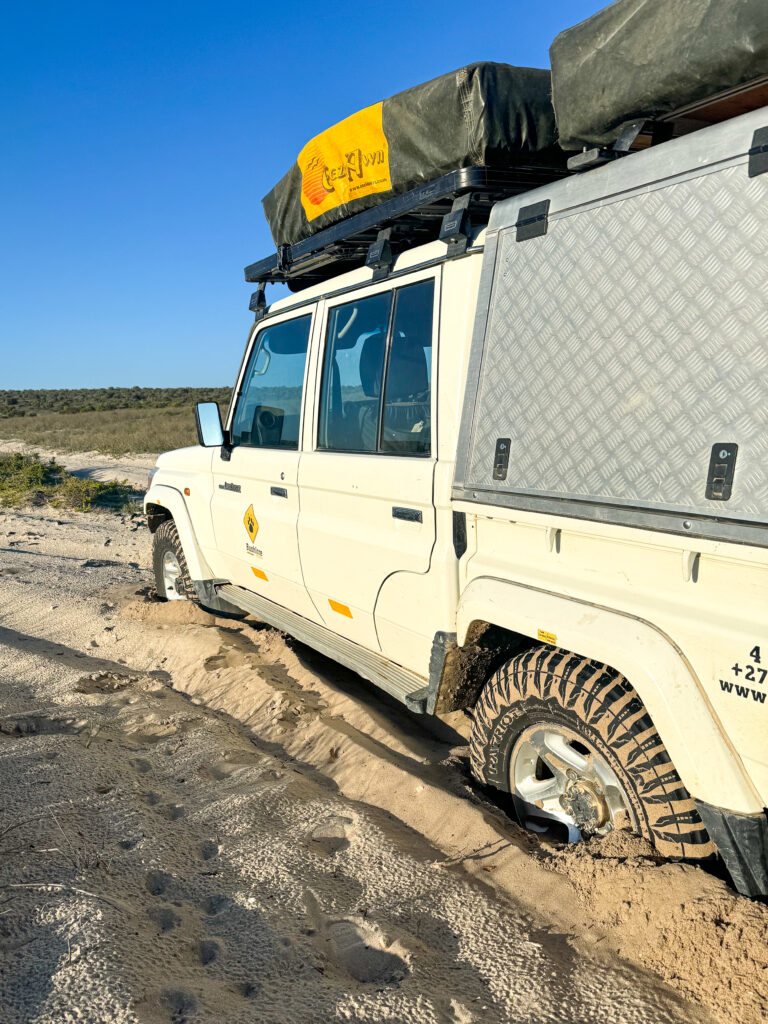
Not to worry – we had sand tracks onboard (that we hadn’t had to use once) and it was still more than an hour until sunset. However, although it looked like the sand tracks would be just the thing, we found ourselves deeper and deeper in the sand. By this point the sun was setting and we’d realised we’d likely be camping for the night right where we were, so Zara and I cracked on to making dinner – but with no cell phone coverage and little chance of anyone driving by for potentially days, the boys continued to puzzle it out…and puzzle it out they did!
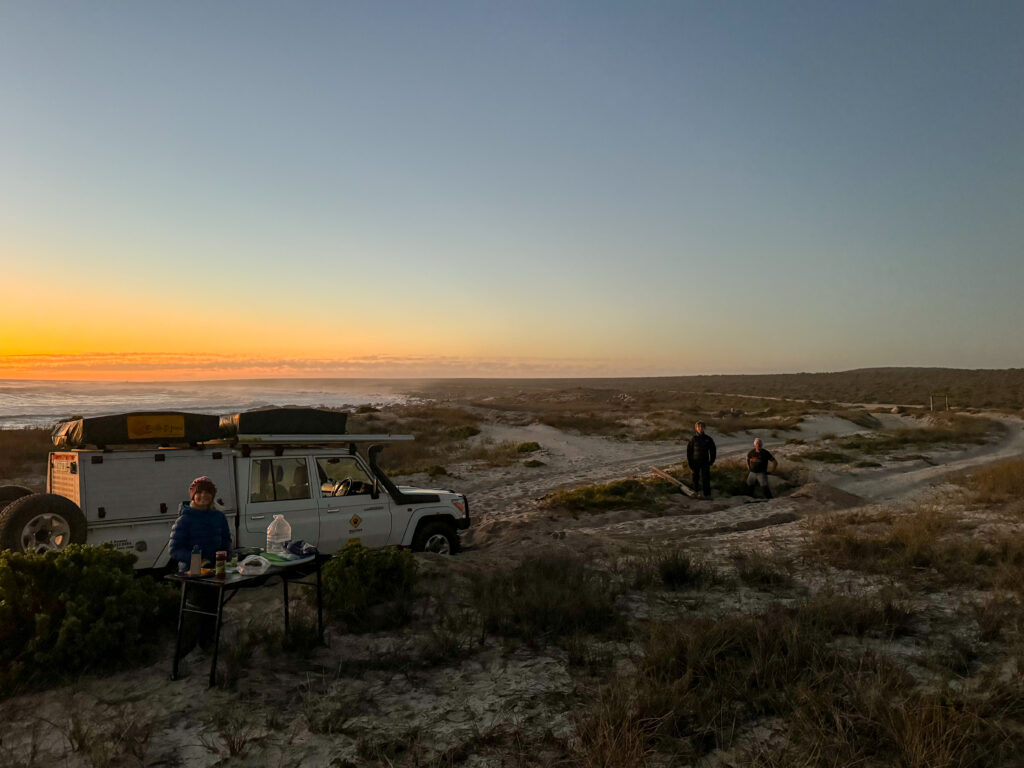
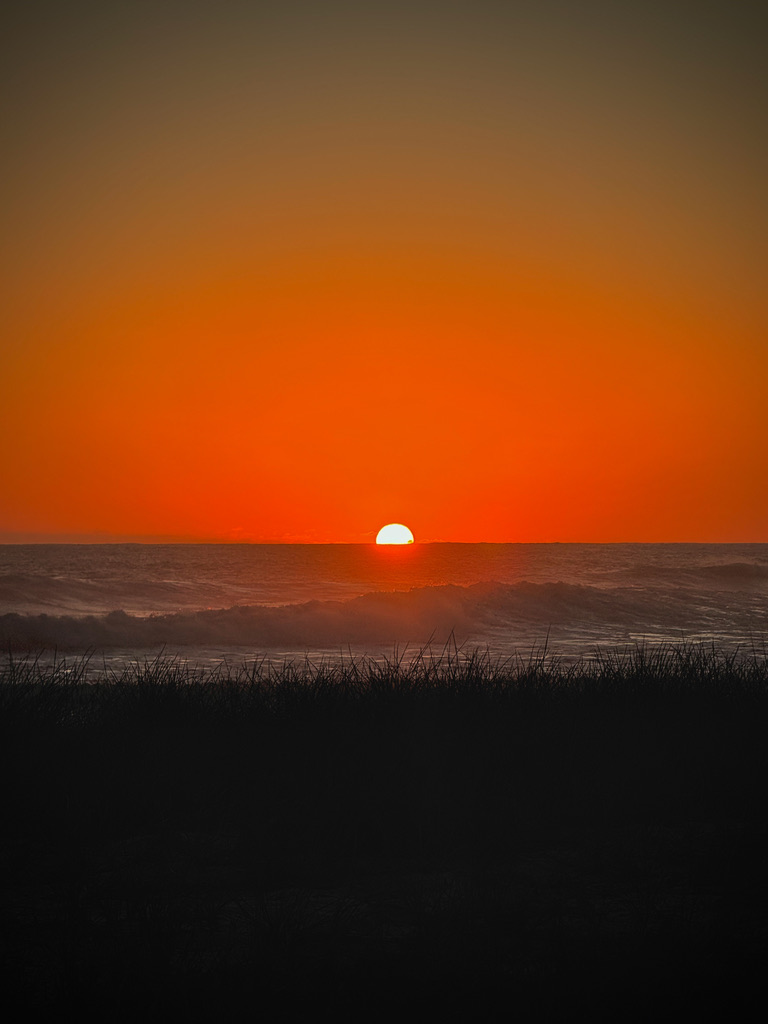
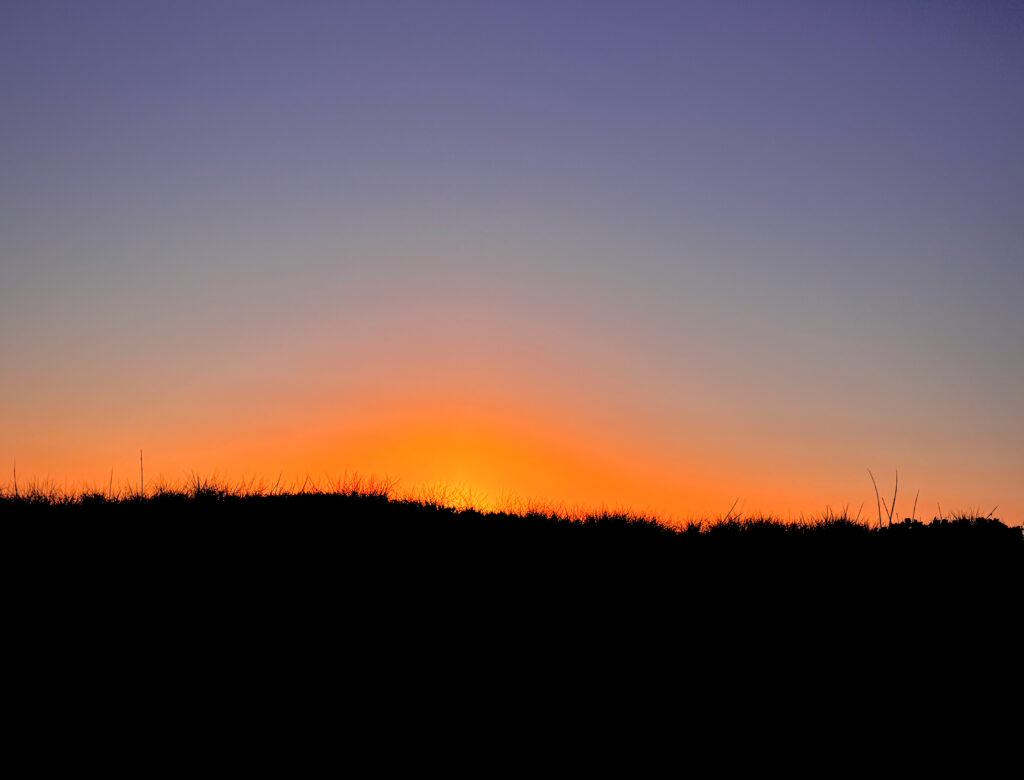
Jungle Man Logan sent Lucas on a mission to bring back the biggest log he could carry from an old falling down fence line we’d passed further down the road. Meanwhile he carried on shovelling sand to clear our beached undercarriage and the way forward. Clever, strong, resourceful Lucas found a large unattached fence post, used a stone to hammer through a rusting piece of barbed wire still connecting it to another broken post, and then tried multiple ways to actually carry it before hoofing it across the back of his shoulders and carrying it like a sherpa in the mountains. We could hardly believe our eyes when he turned up with it! Logan then dug and dug and dug a ridiculously deep hole to bury two thirds of the post, and then attached our own truck’s winch to the post. At that point, we stopped for a brief dinner to ensure everyone’s spirits stayed high and to give Logan a chance to think it through.
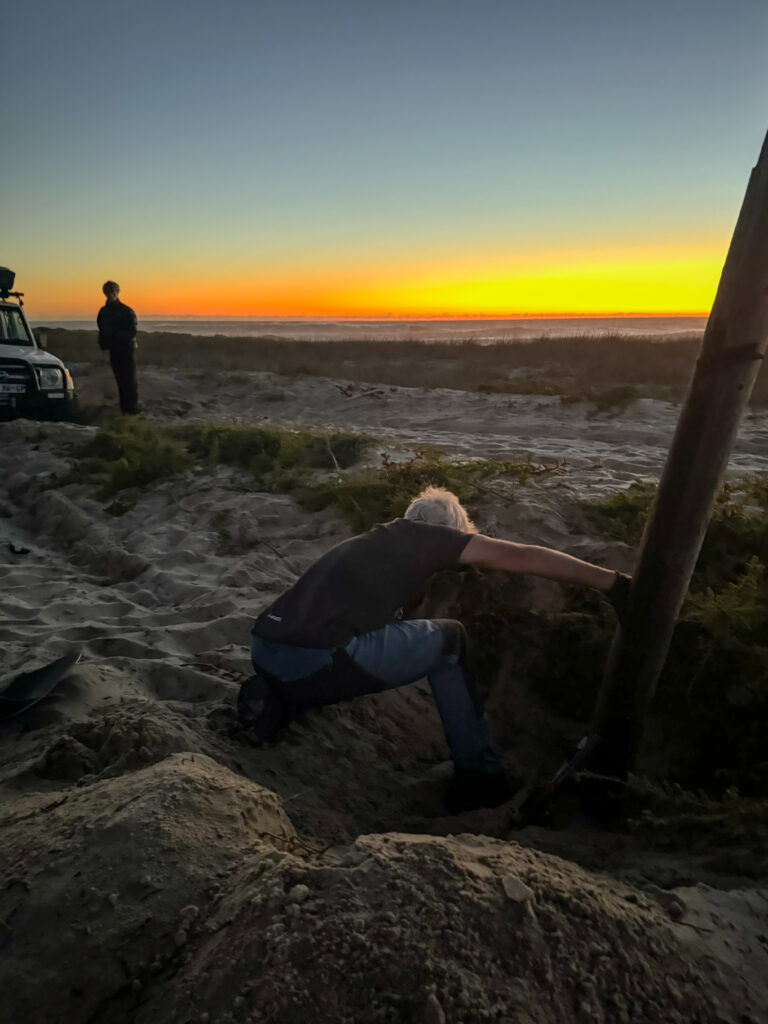
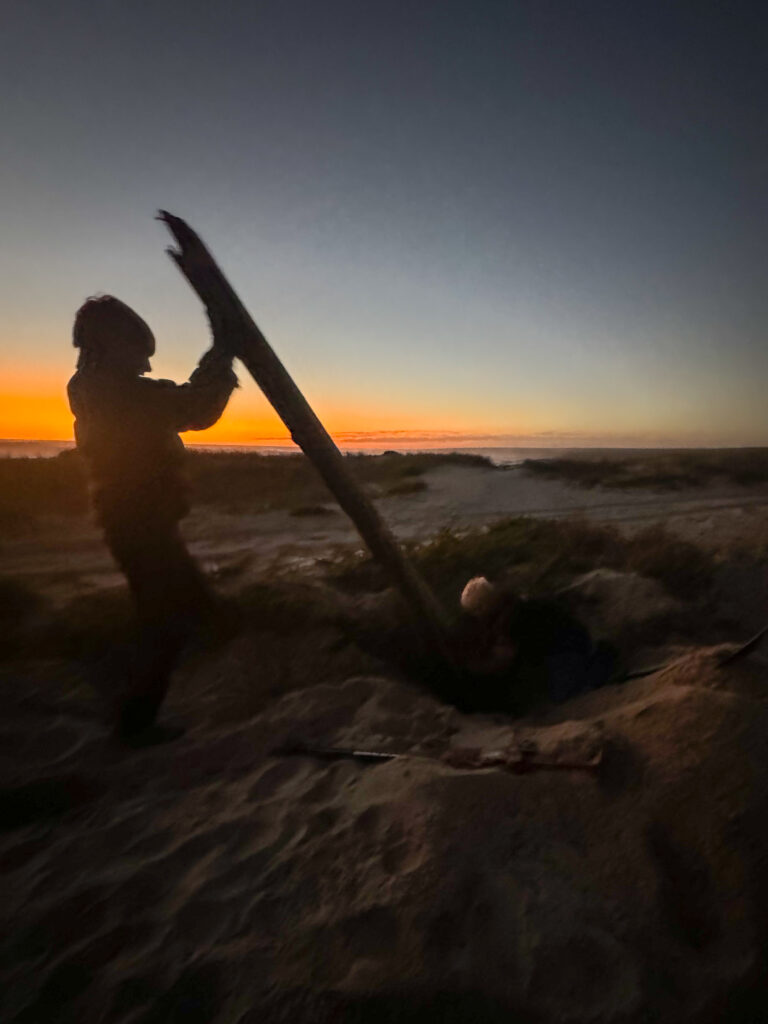
Then, more than 2 hours after first becoming stuck, by which time the sky was dark and the stars were out, with Logan driving and Lucas in the passenger seat controlling the winch, the boys winched our truck to safety out of what was now a VERY deep hole! What an unbelievable sight! “World Schooling” sure put up a tough test but those Akers boys smashed it out of the park!
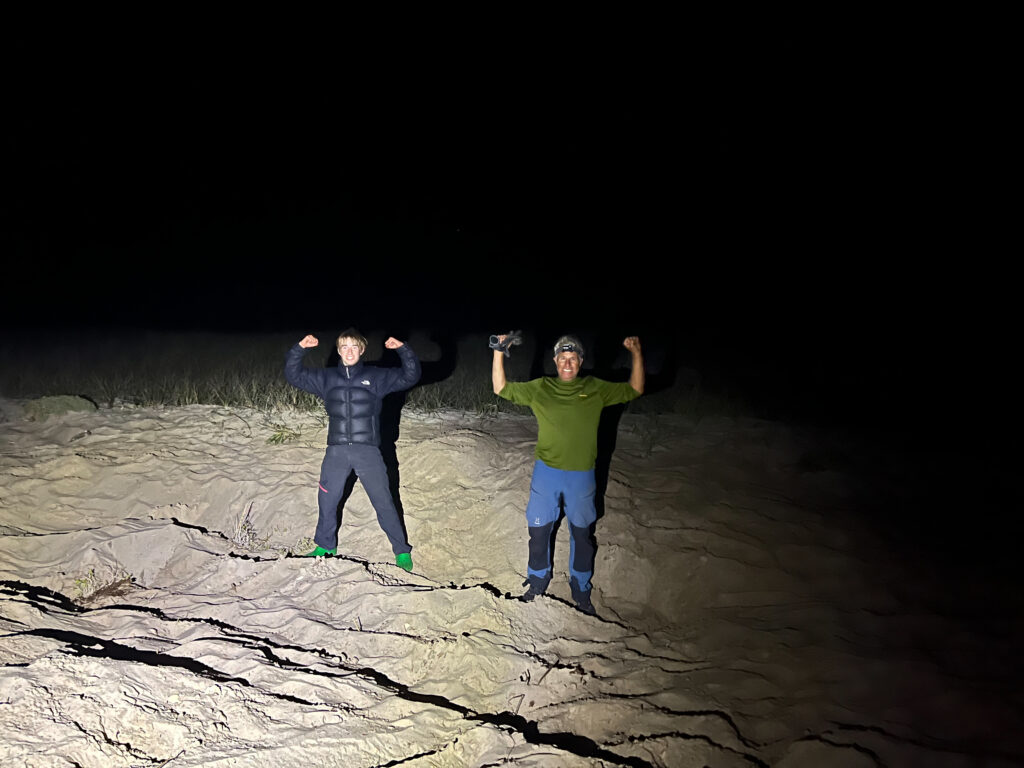
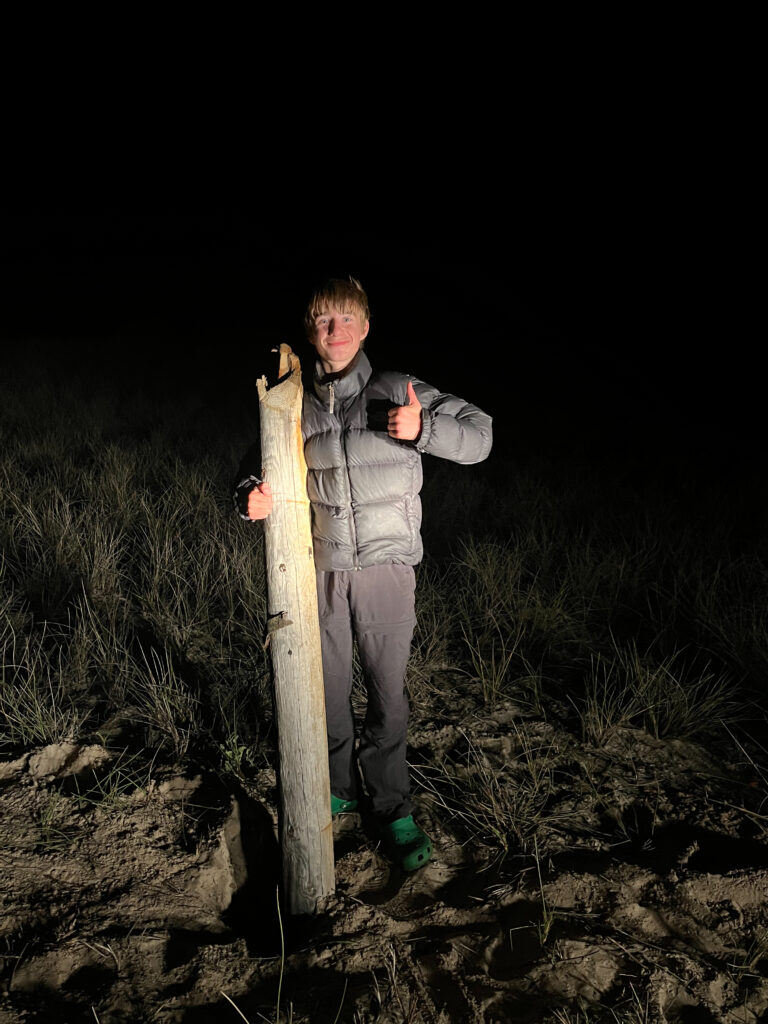
Once we were safely in our campsite, Lucas and Logan went down to the water’s edge to take some night photos and discovered these little critters running all over the beach!
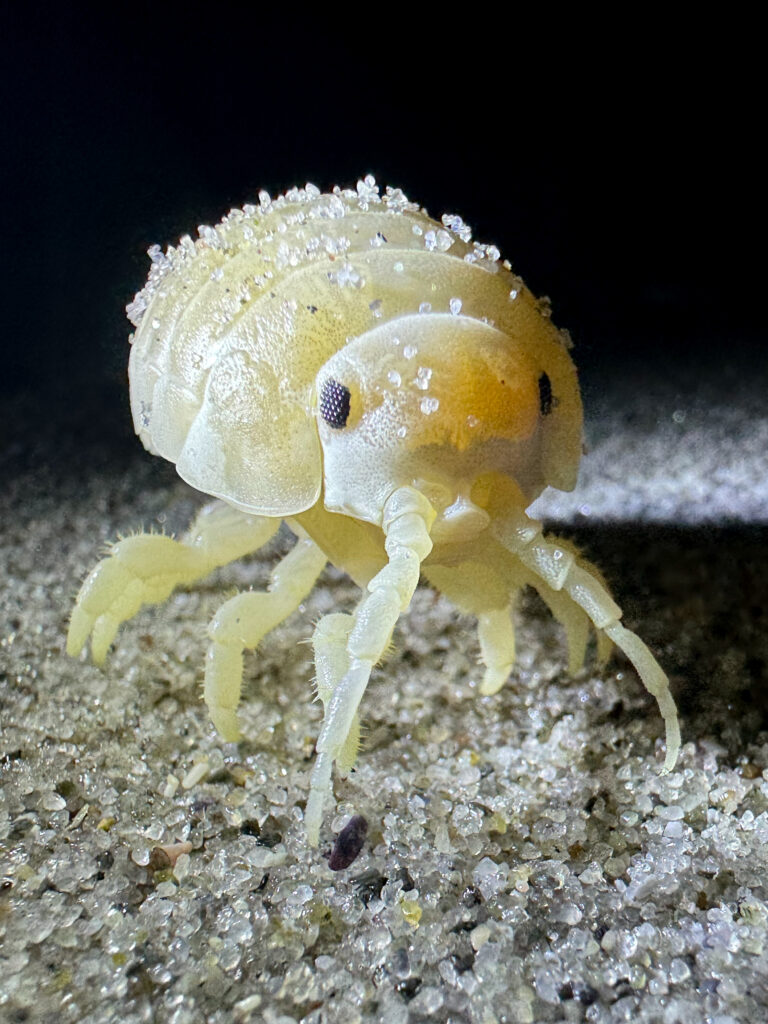
Then the next day we saw this little guy cruising across the road!
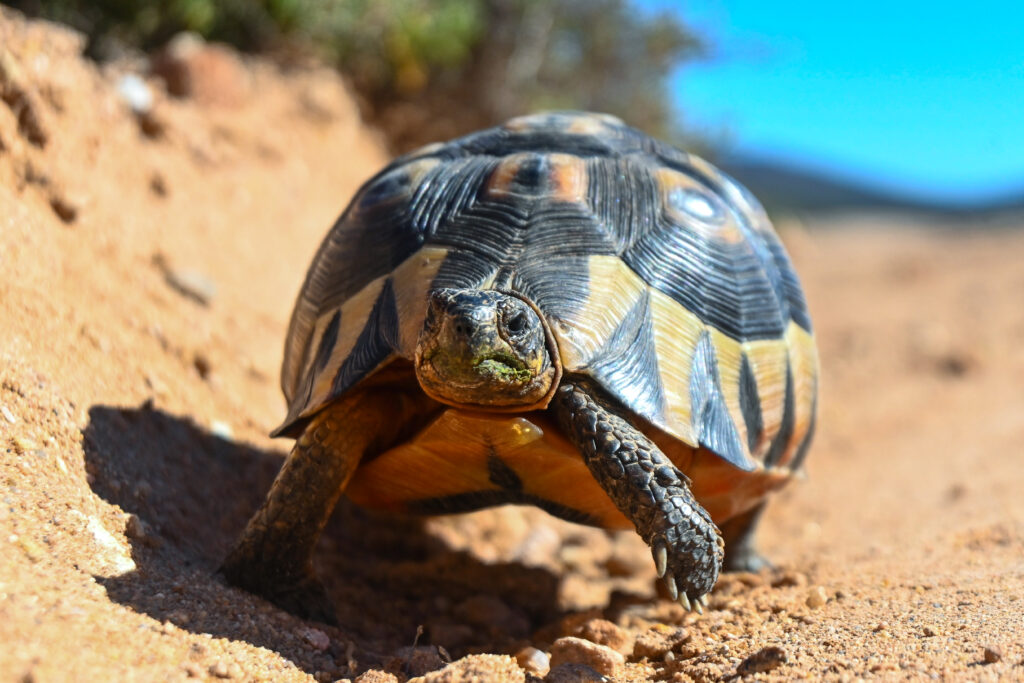
We made it back to Cape Town without any further mishaps. It felt strange to unpack what had been our home for 65 days, remarking on all the little things that, when added together, had made our trip so successful (like colour coding the keys with Zara’s rock pens – the 2 side doors had 3 locks each and each side used a different but very similar key…so with these wee coloured dots, the 10 or 20 times we opened the side doors every day, we used the right key every time!).
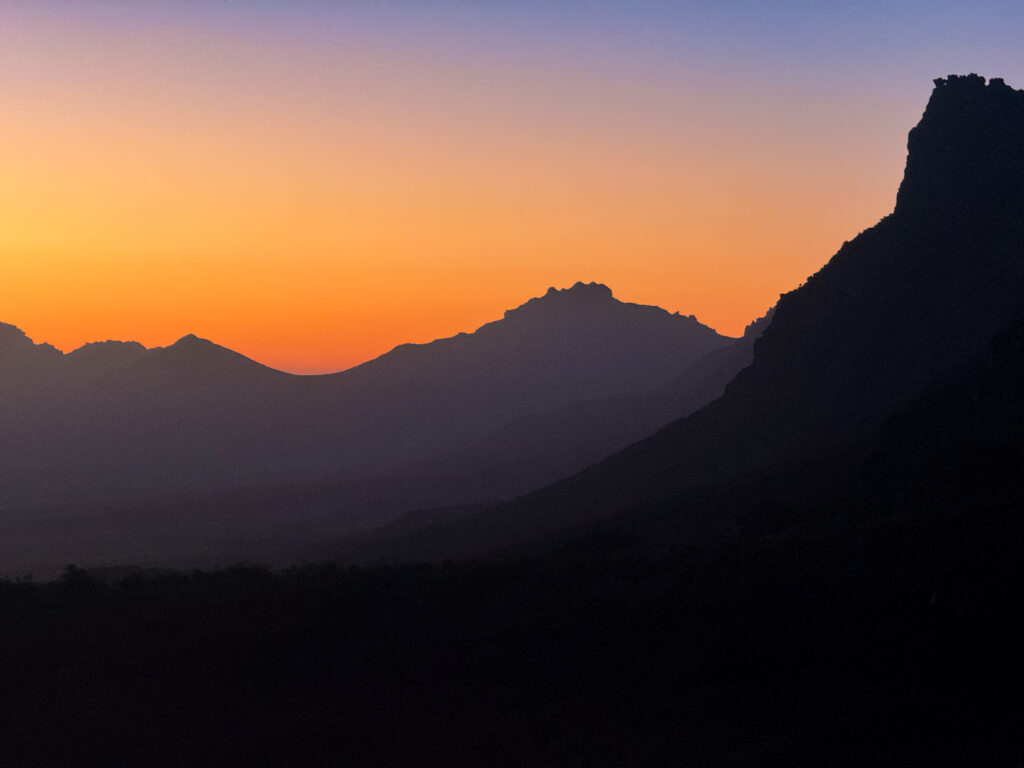
Africa had been everything we had dreamed of and so much more! We had been so looking forward to sharing with the kids what we had loved when we travelled to East Africa in 2008 but still wanted it to be new for us too. Namibia and Botswana (and a little of Zambia) absolutely delivered – what an excellent adventure!
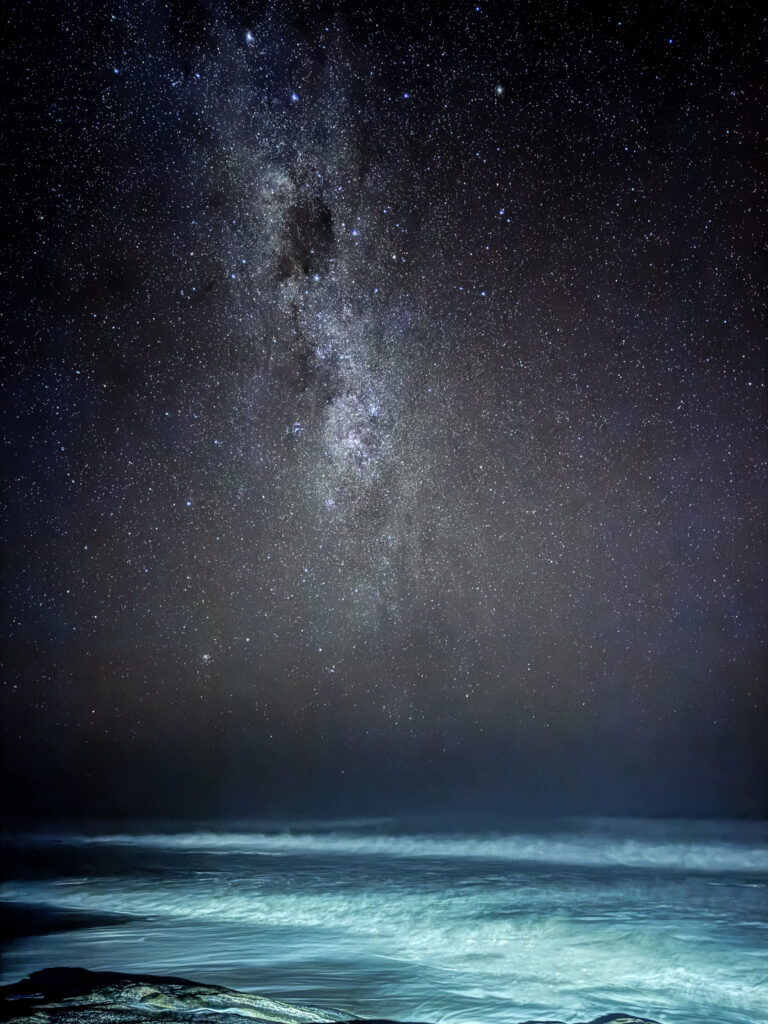
Statistics of our African adventure:
Number of days: 65
Nights slept in tents: 54
Nights slept in a bed: 10
Nights slept in a wild camp: 16
Kilometres driven: 9480 (equivalent to driving the most direct route from the top to the bottom of New Zealand 4.5 times!)
Number of lions: 31 🦁
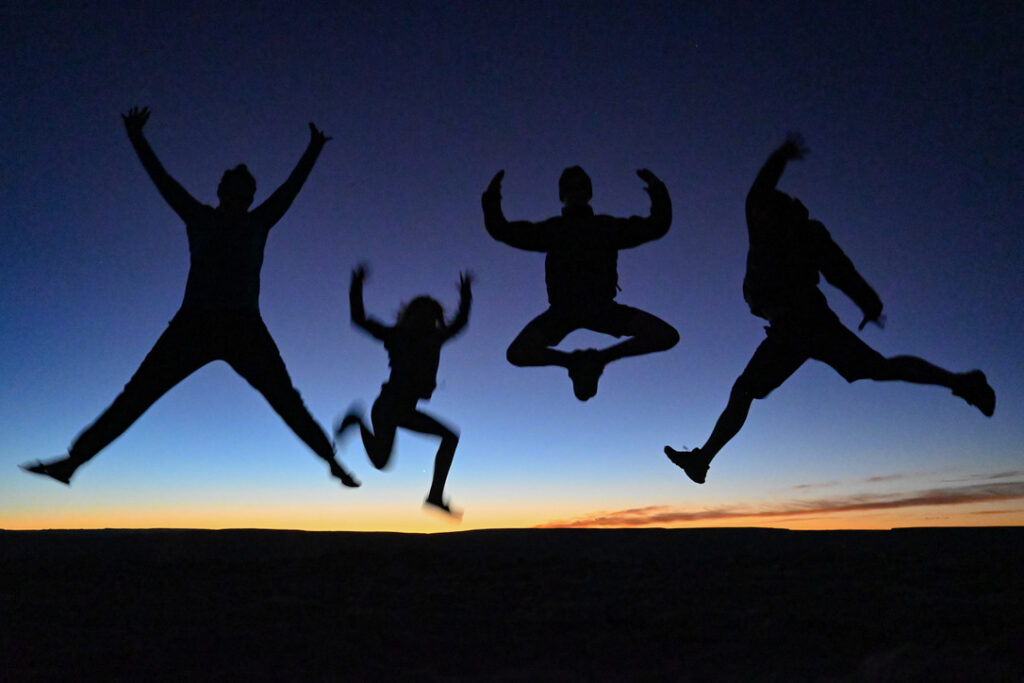
What an incredible adventure! I’m in awe of the planning for such an undertaking, and the memories made. WOW. WOW. WOW!!! love following your adventures. Much love from Iowa! xxx
OMG!!!! That’s so cool guys!!!!!
Looks like you have all had an amazing time in Africa with all those epic animals!!!!